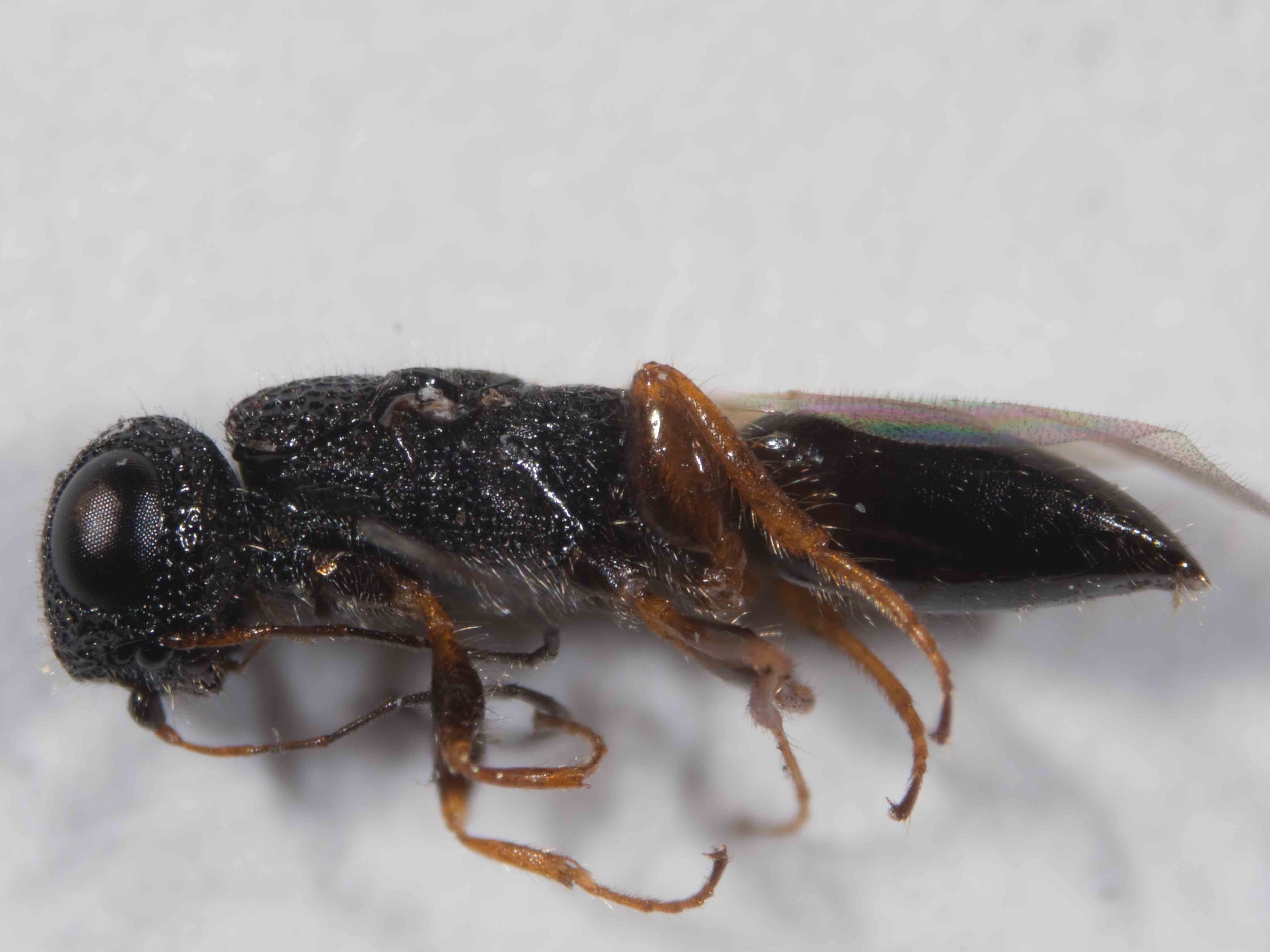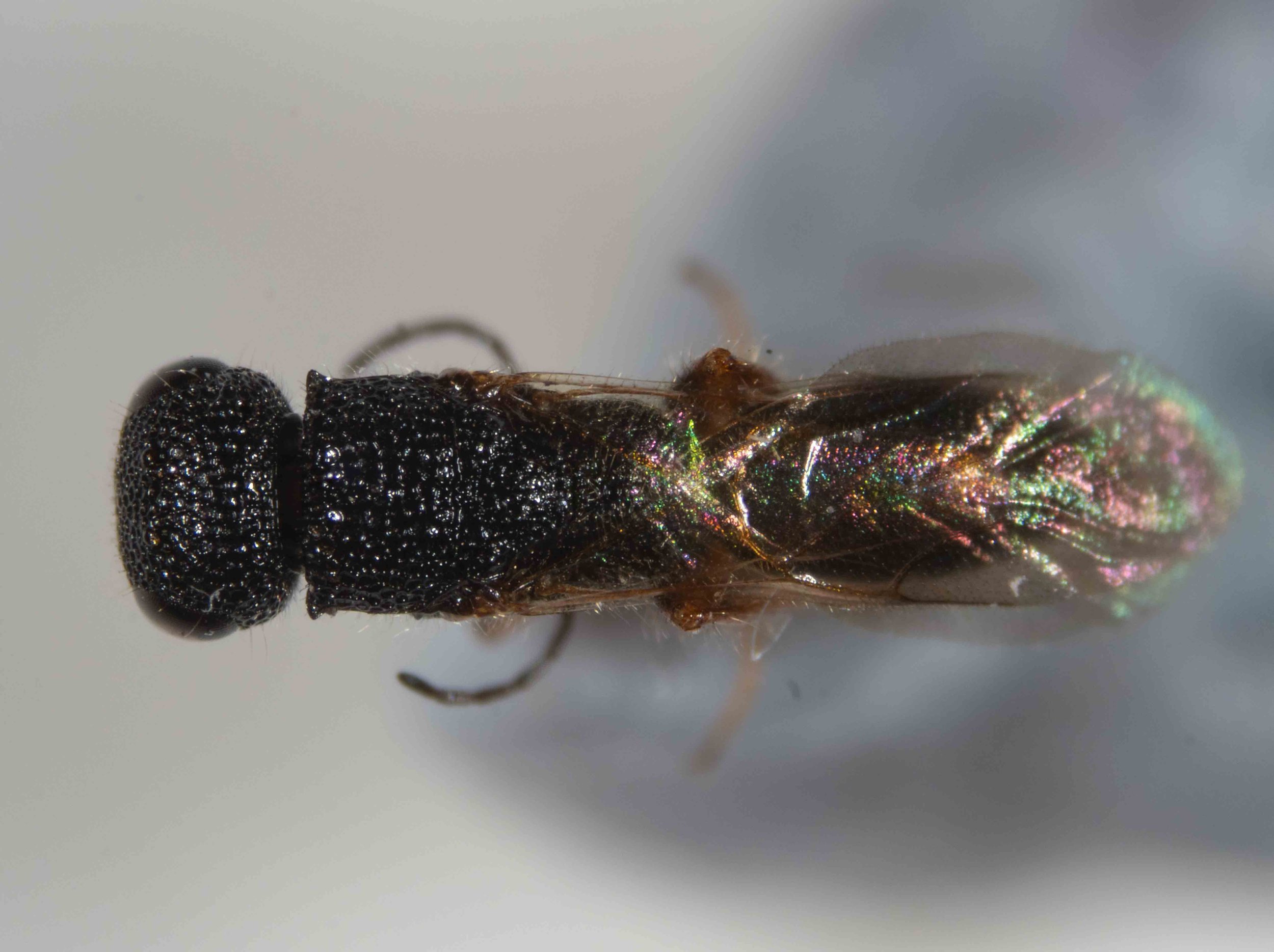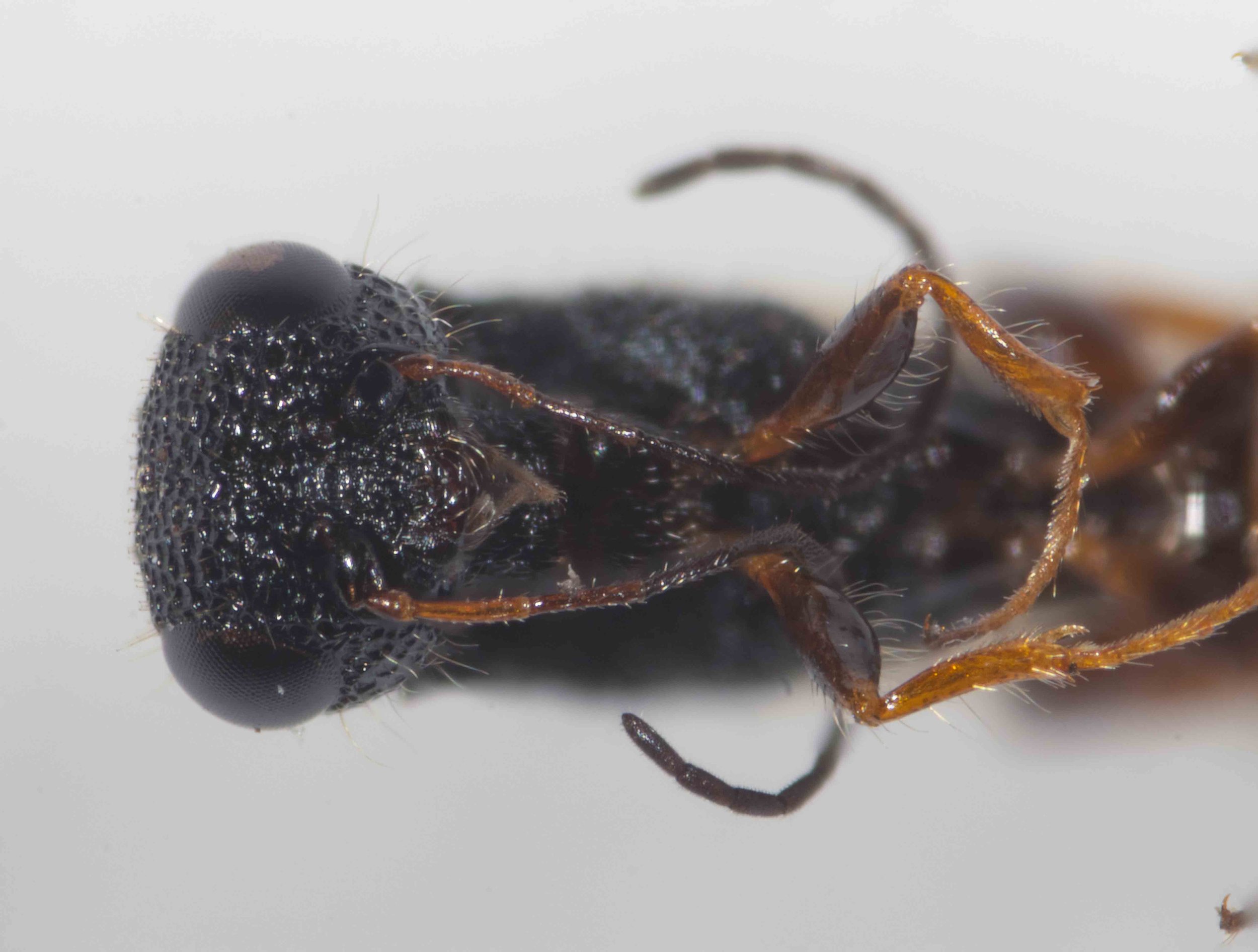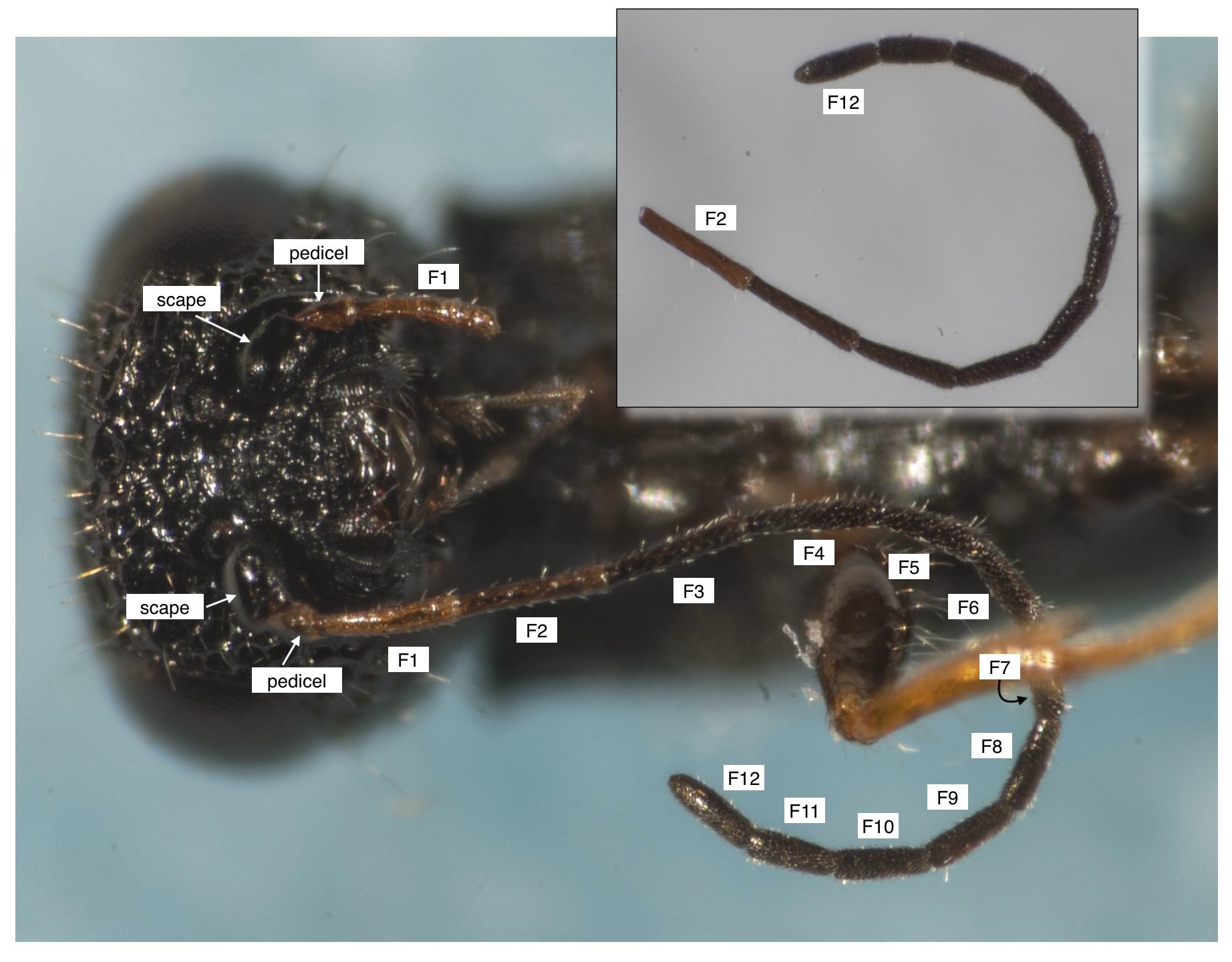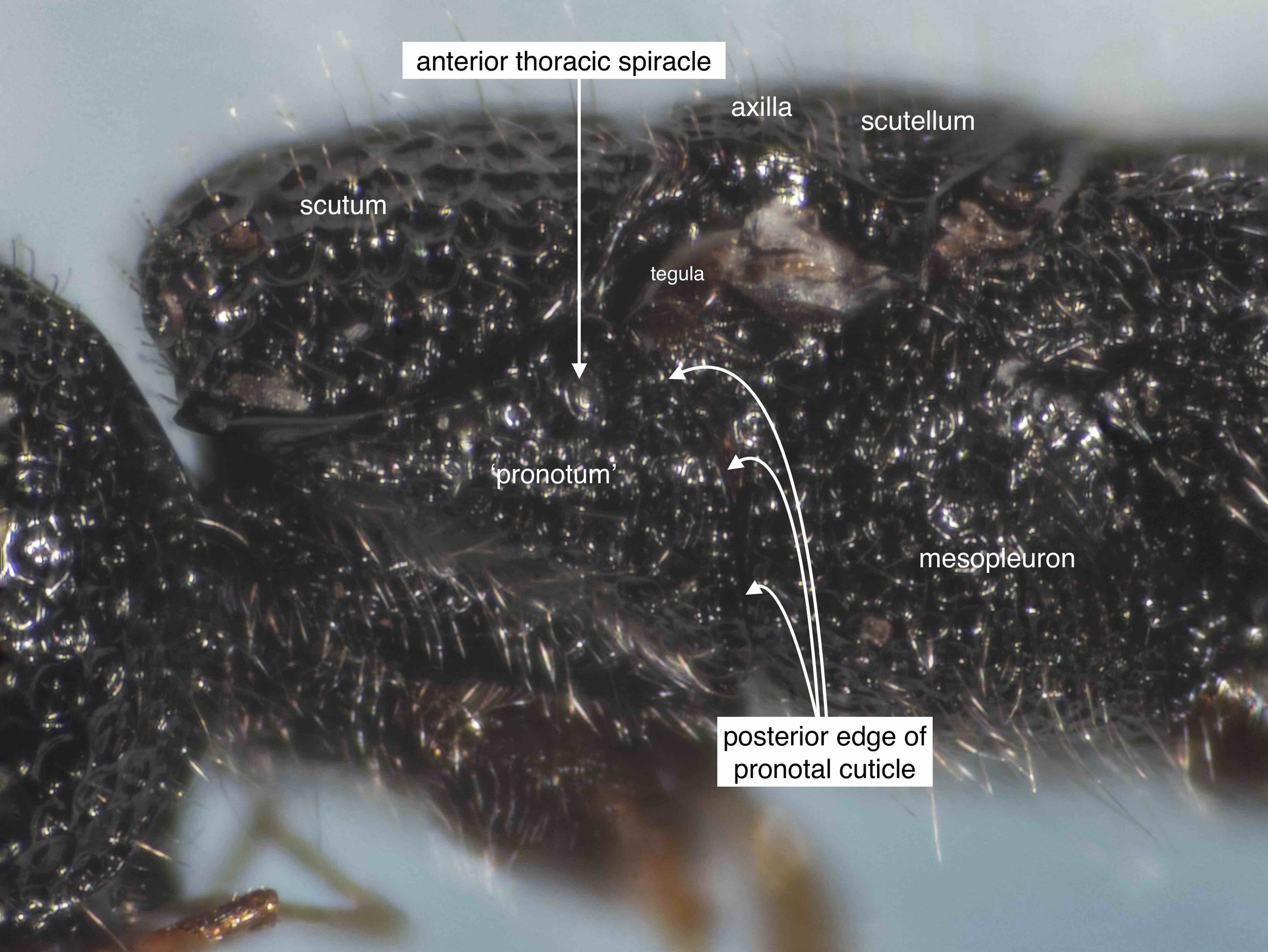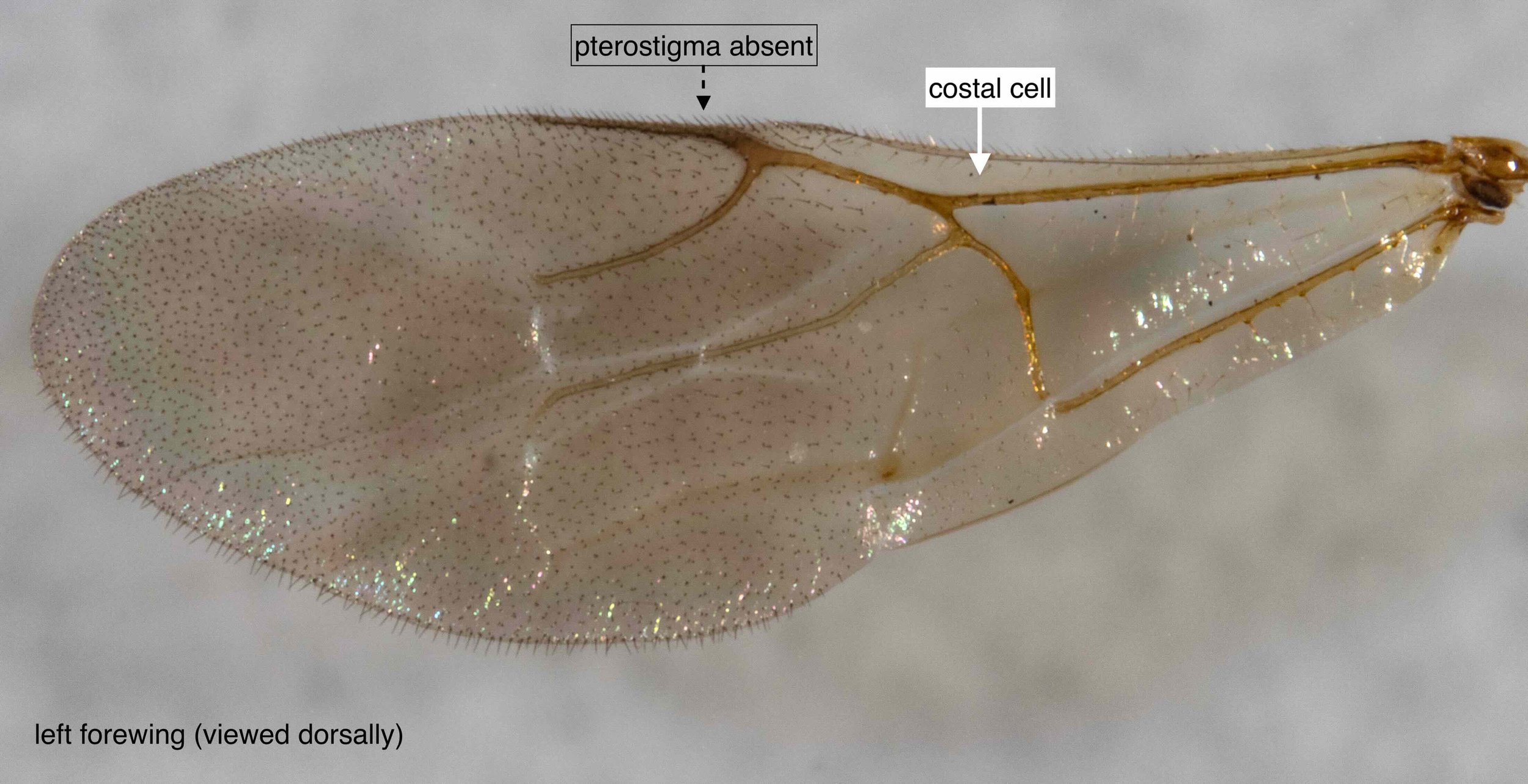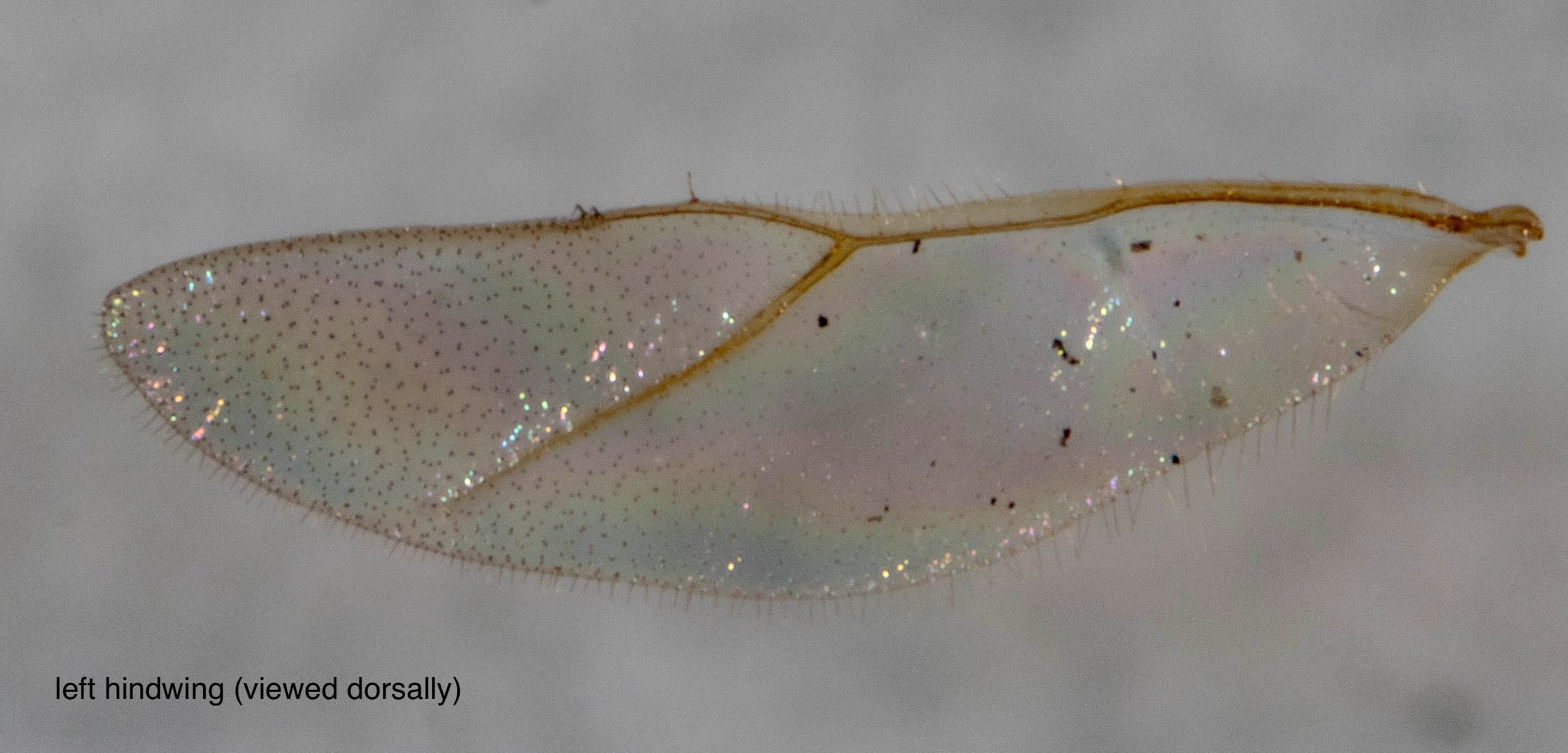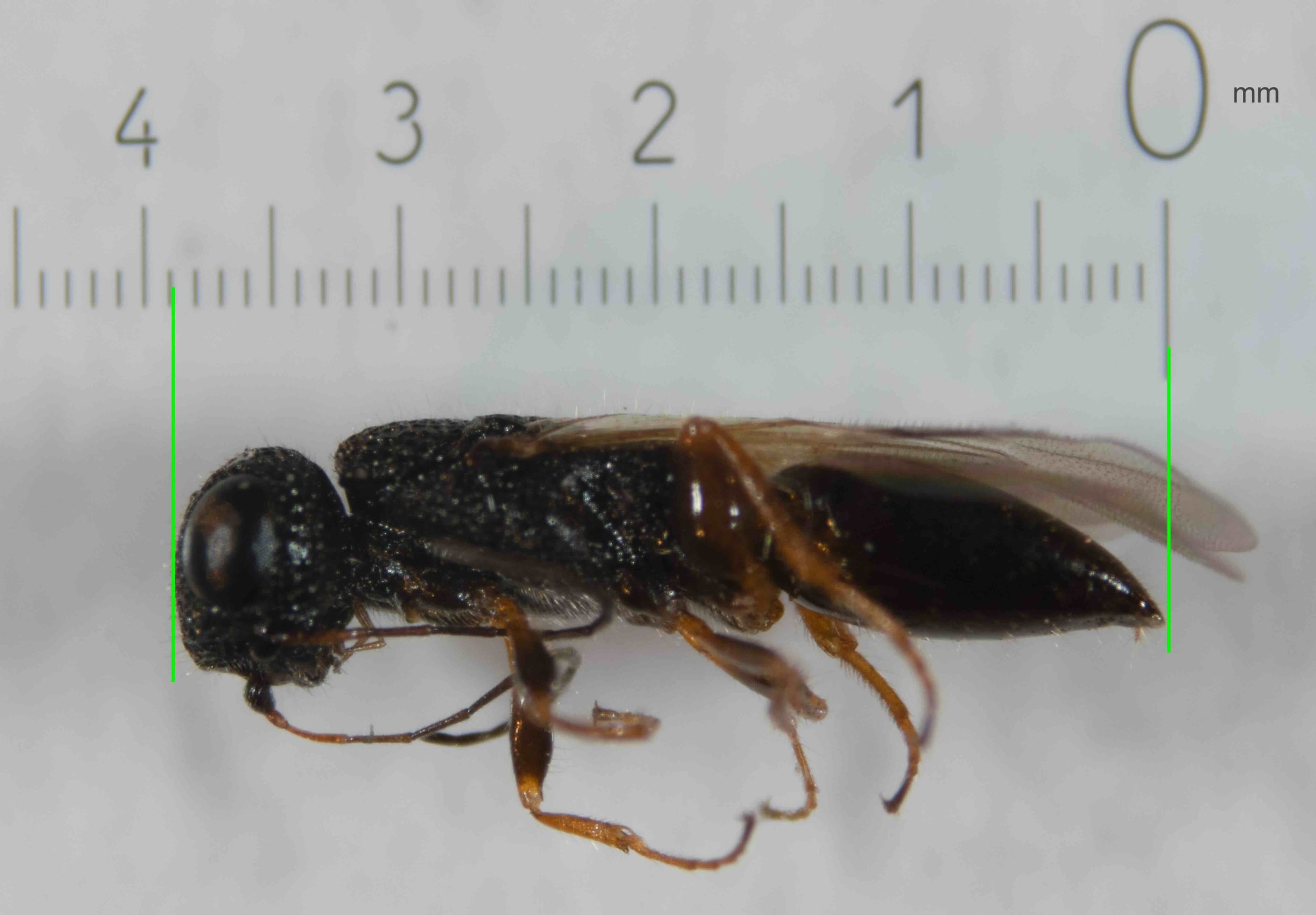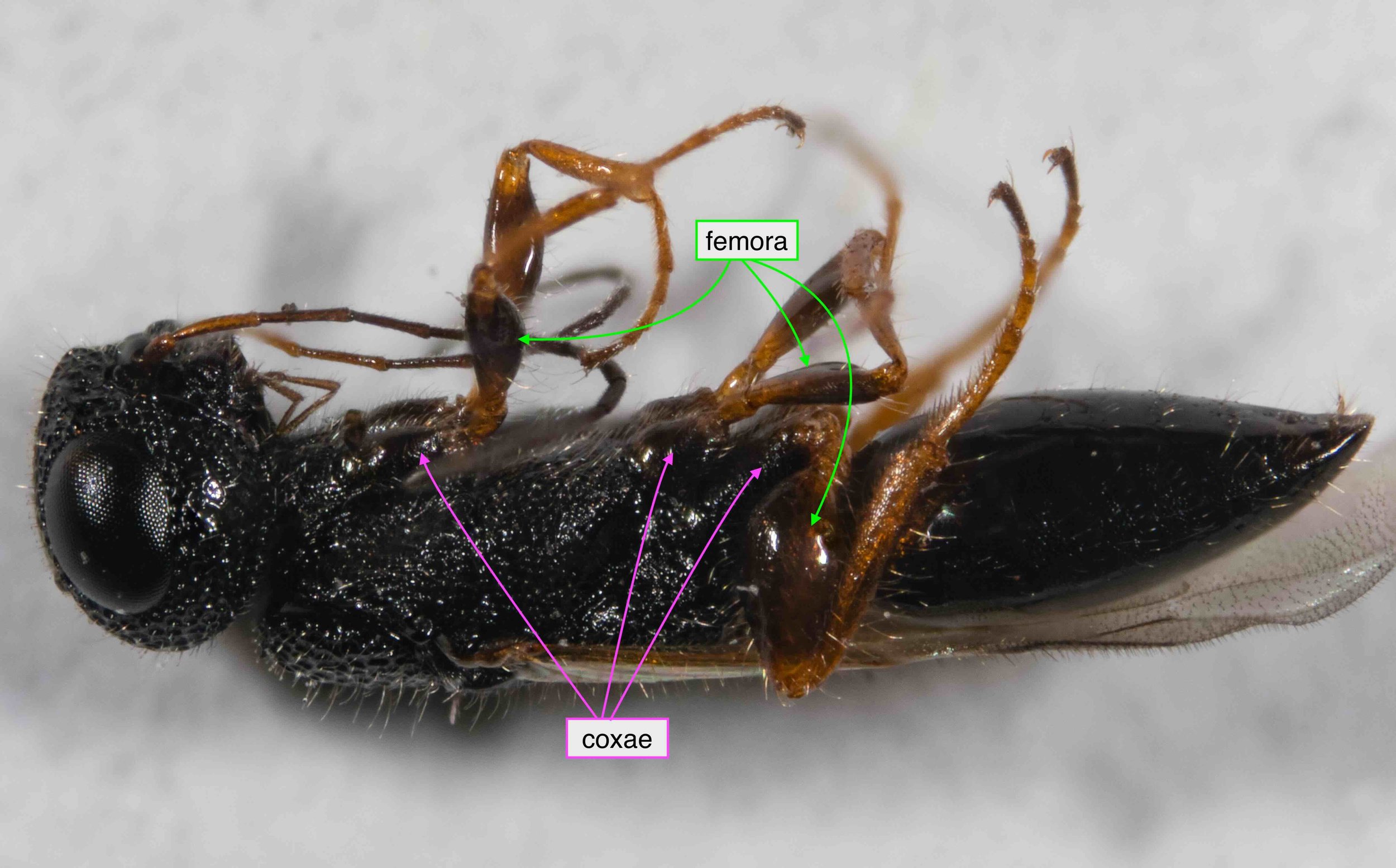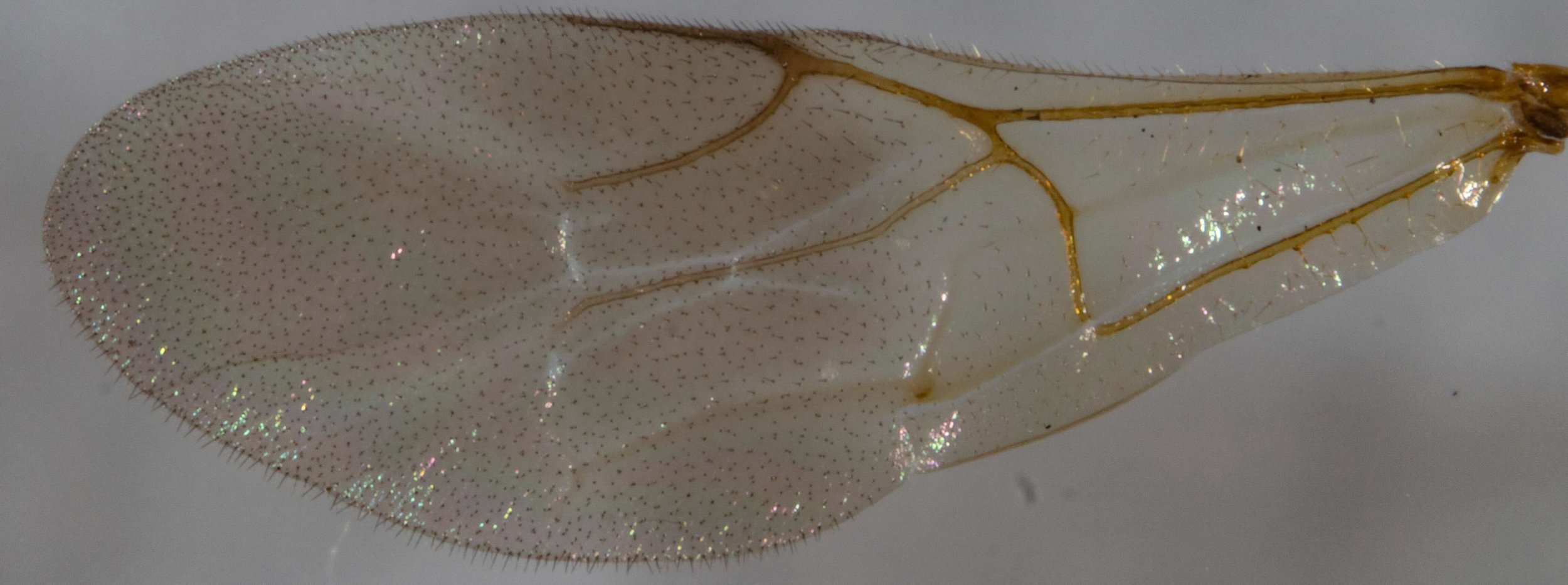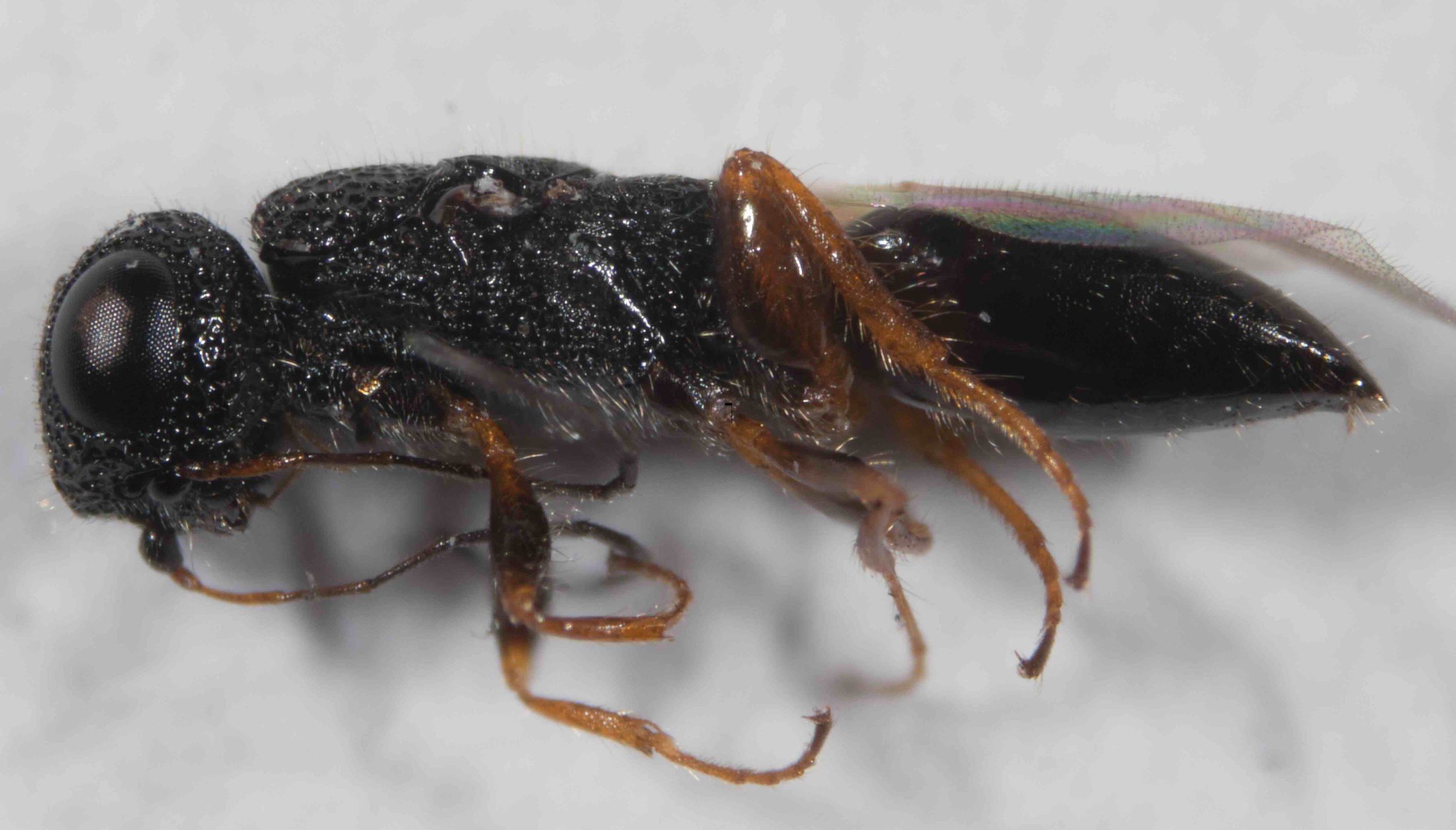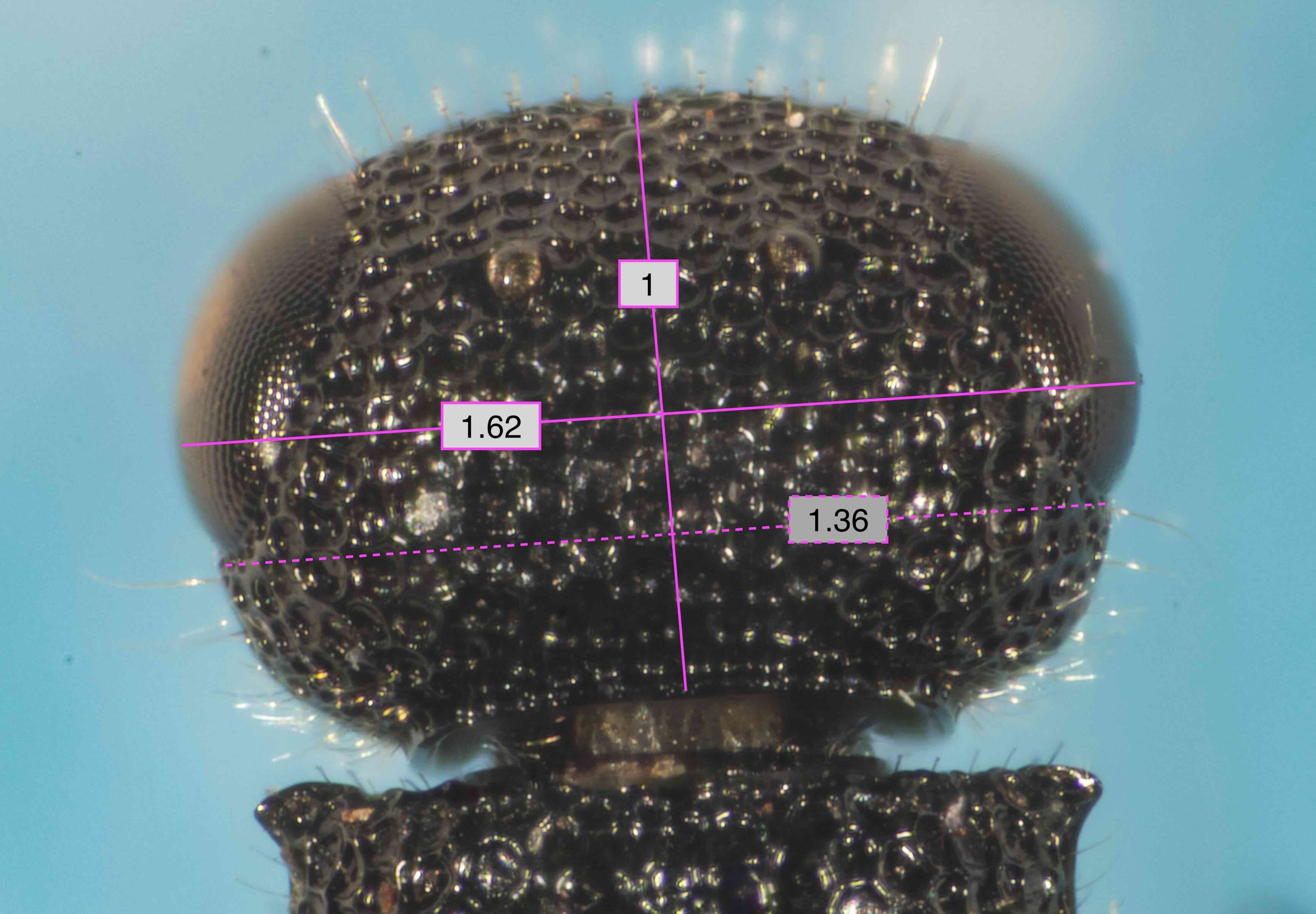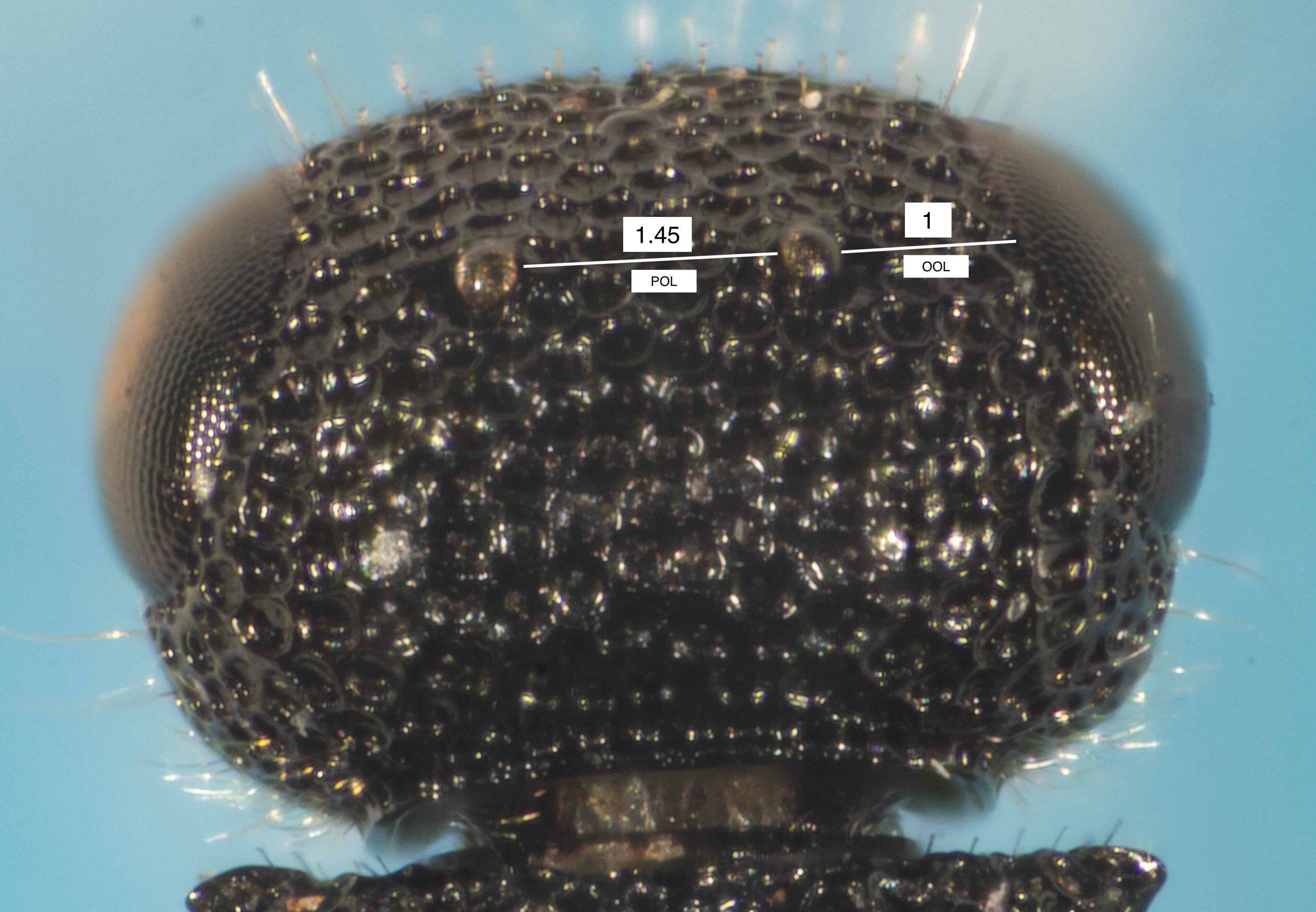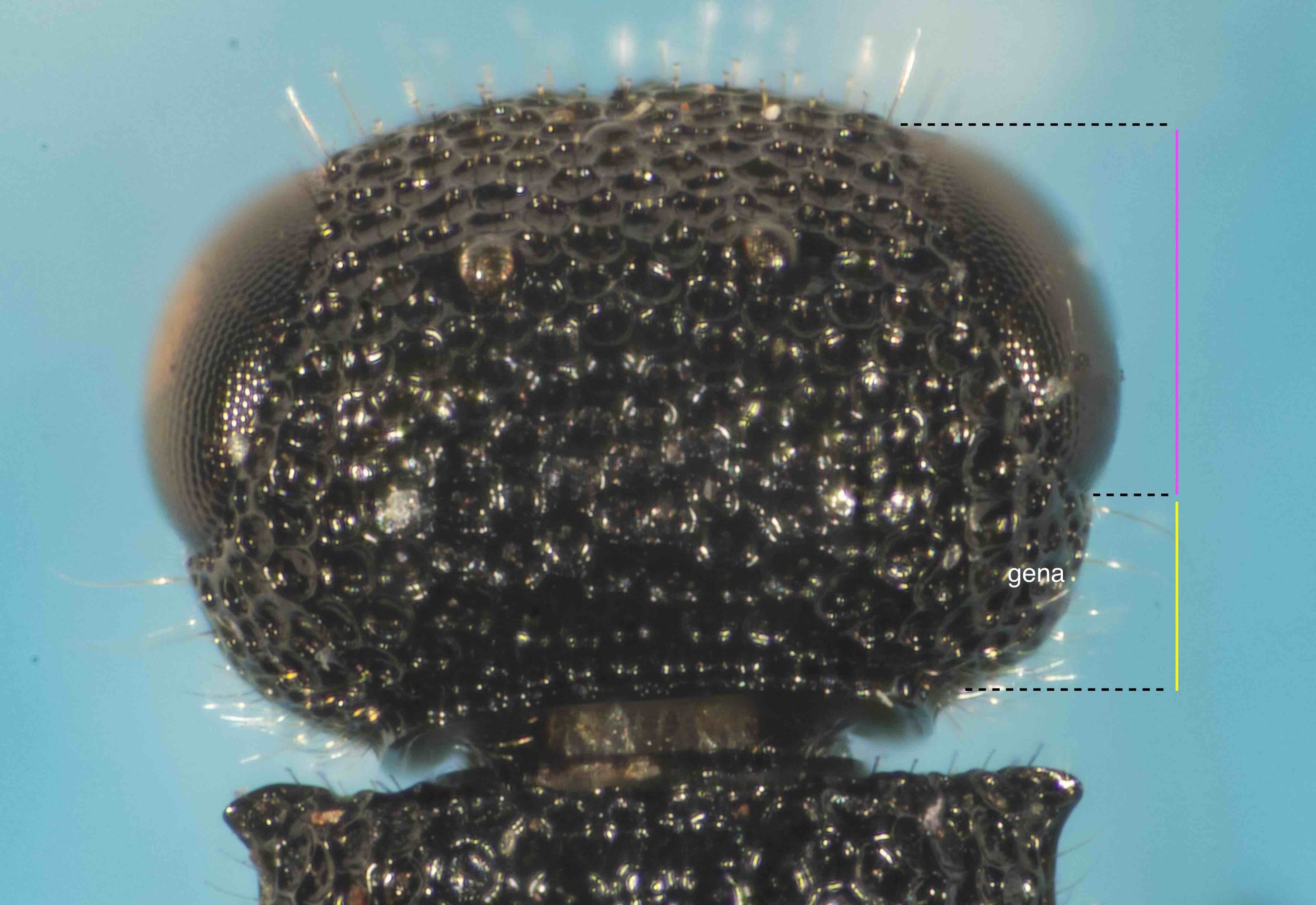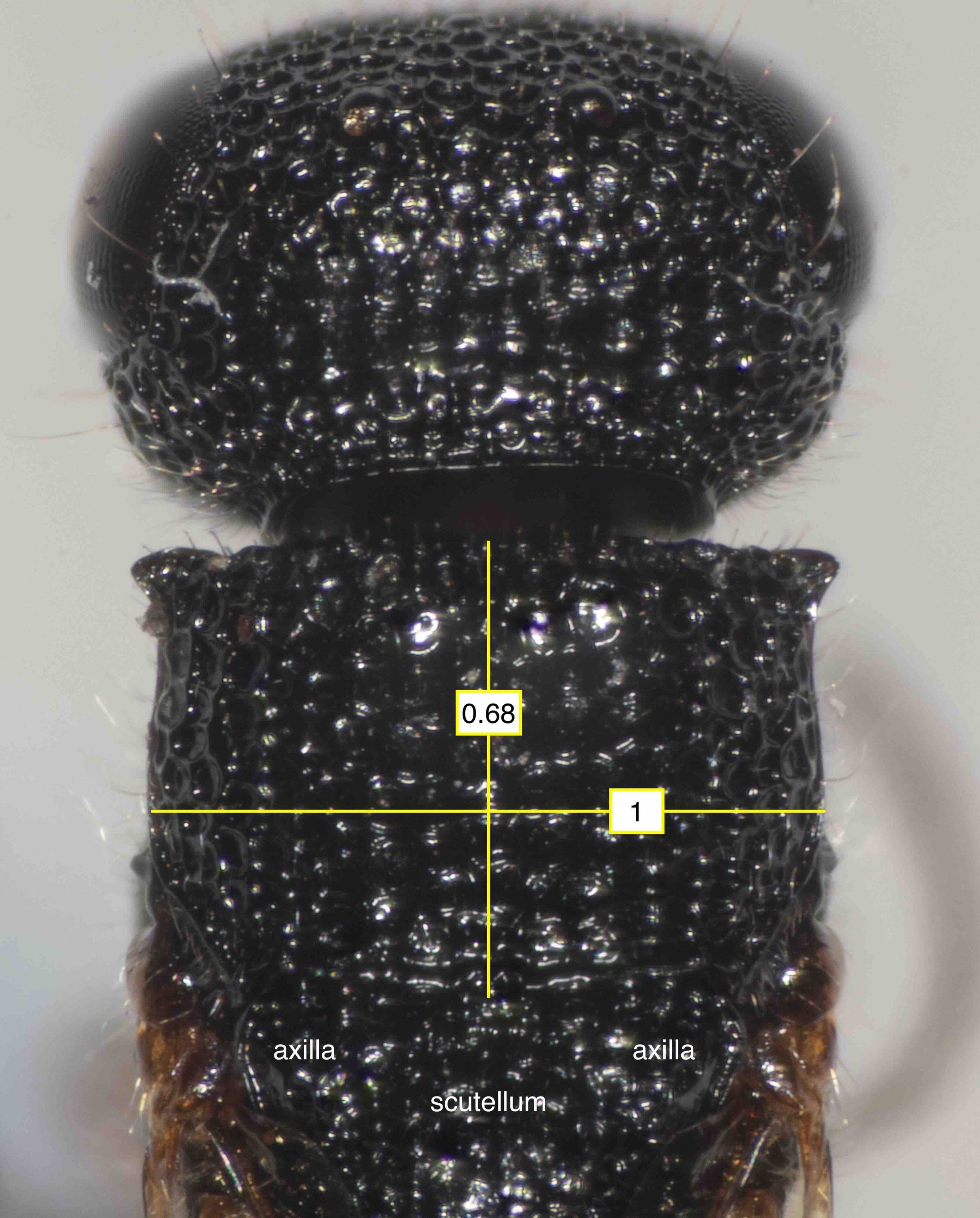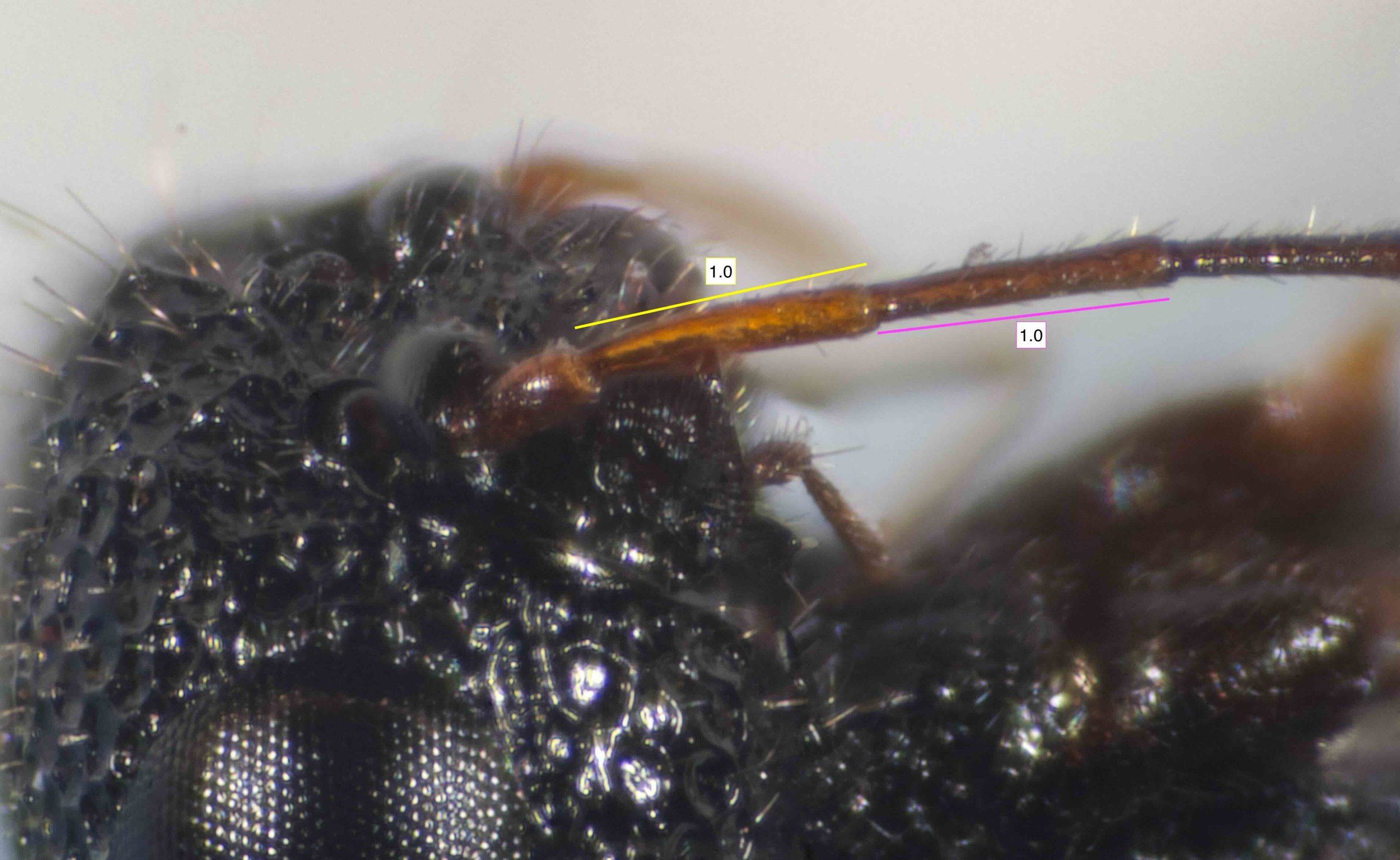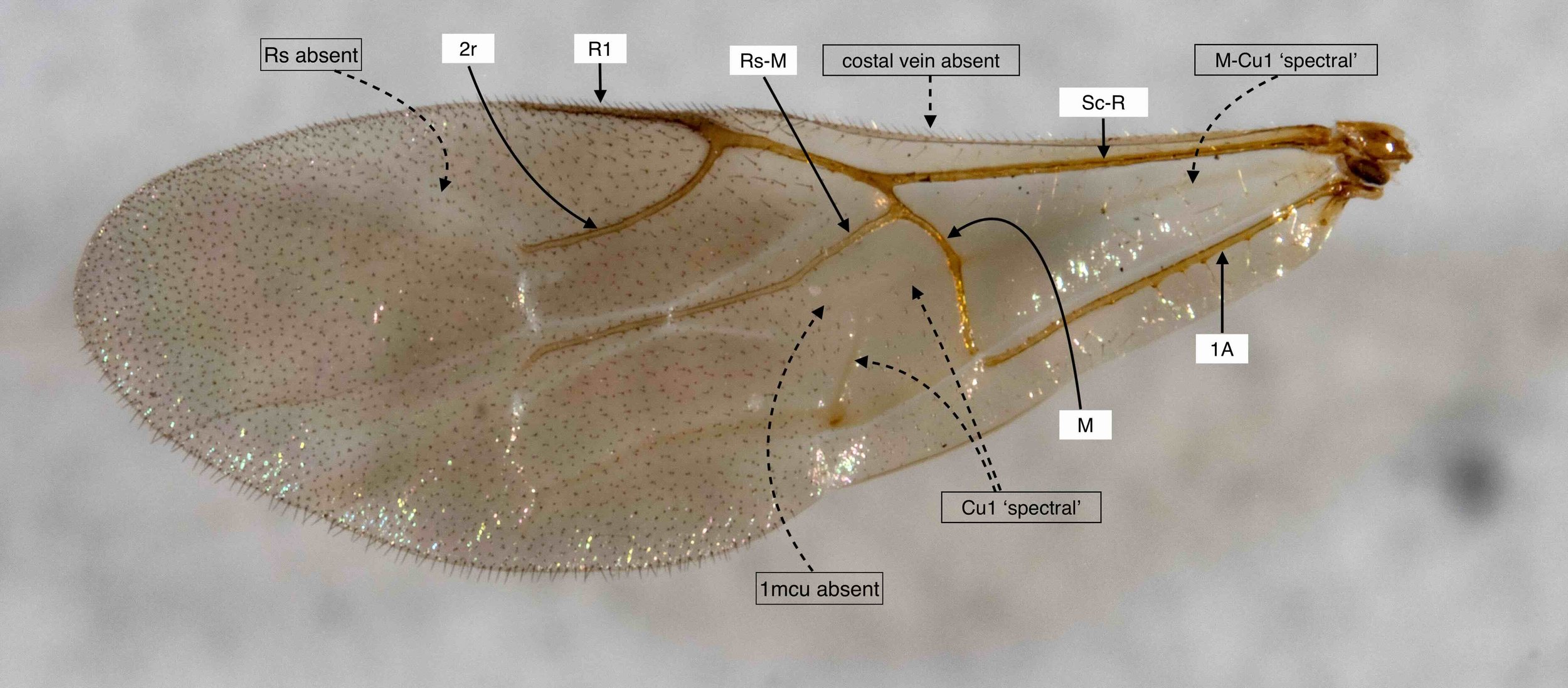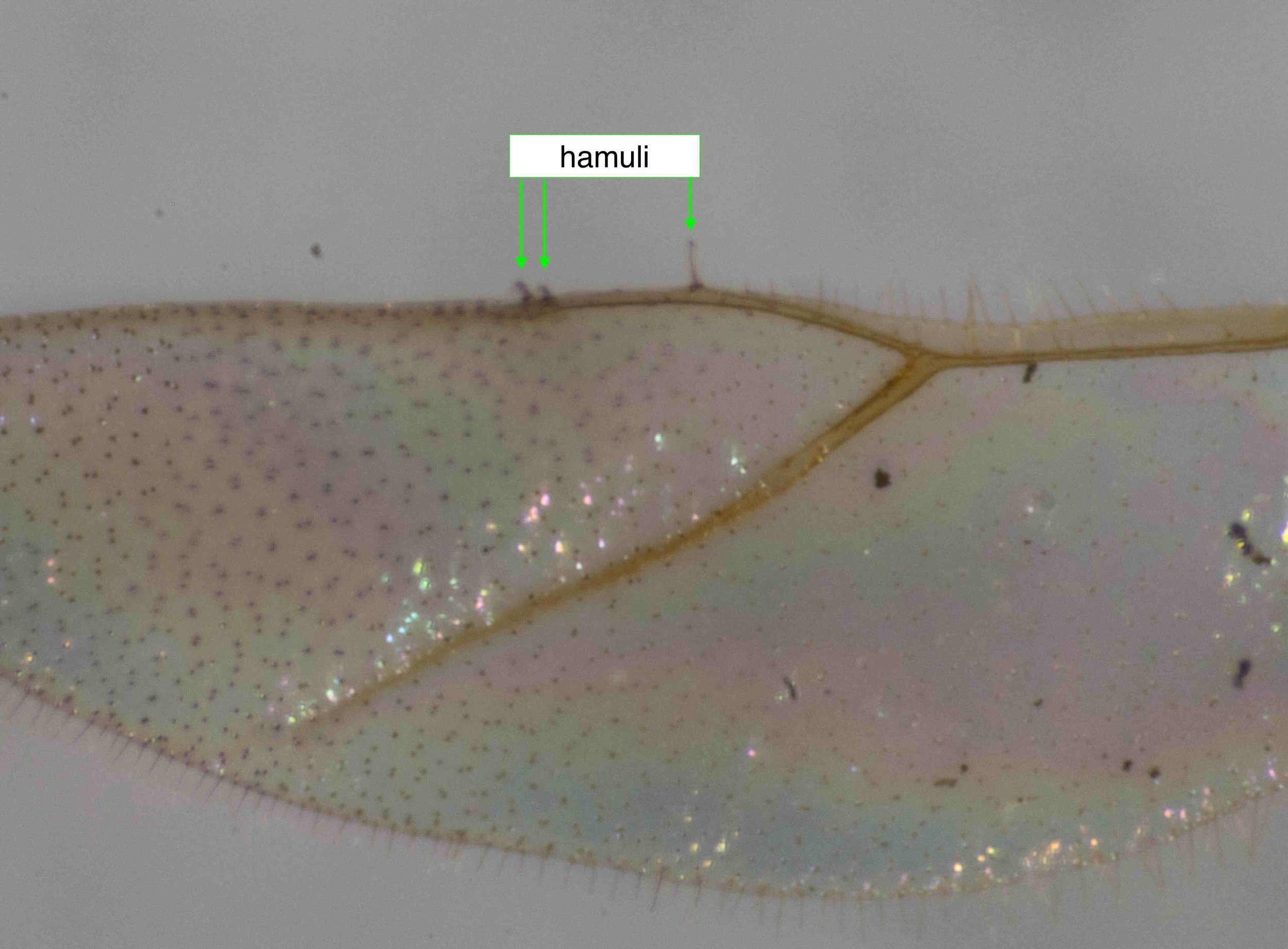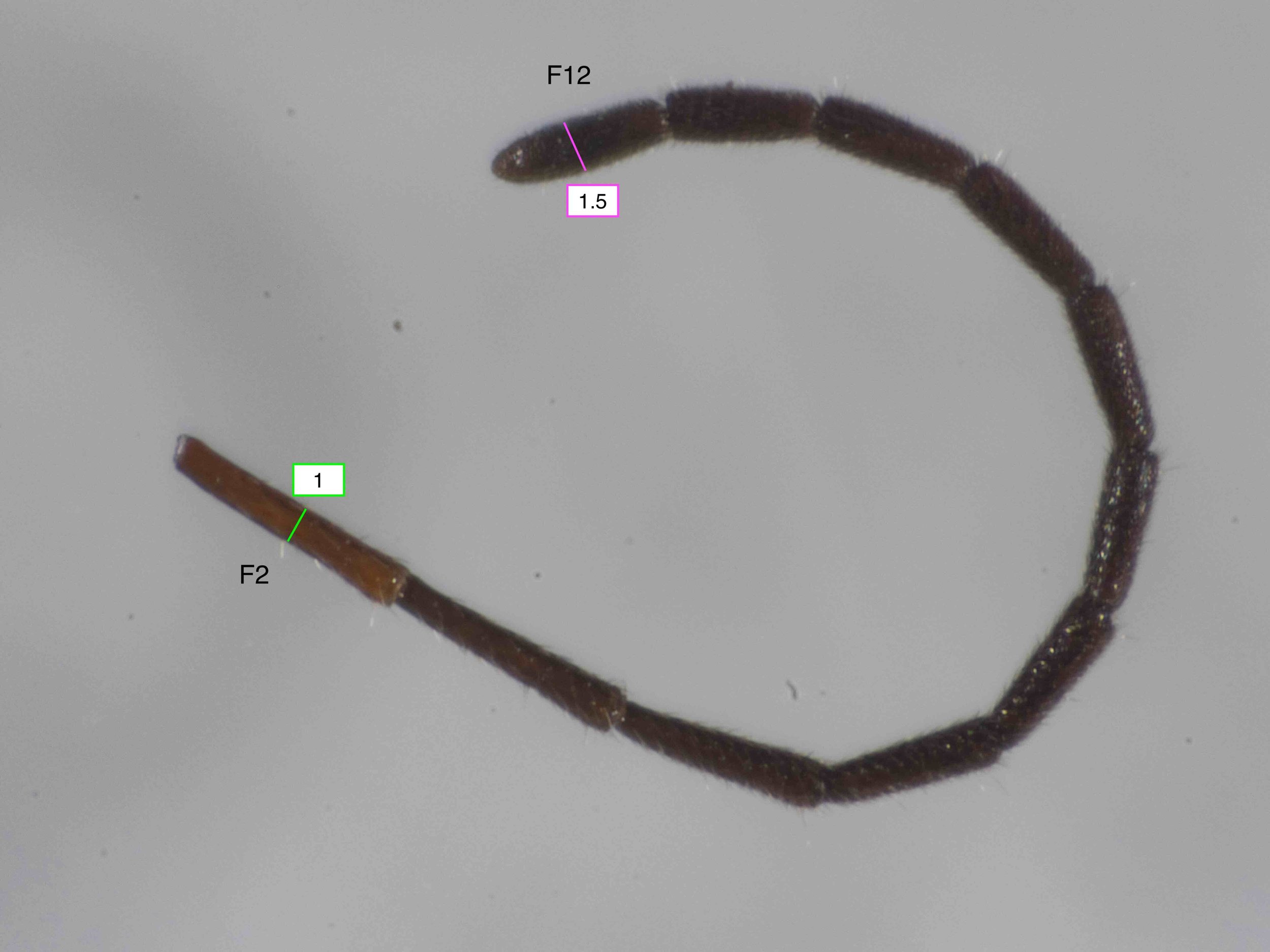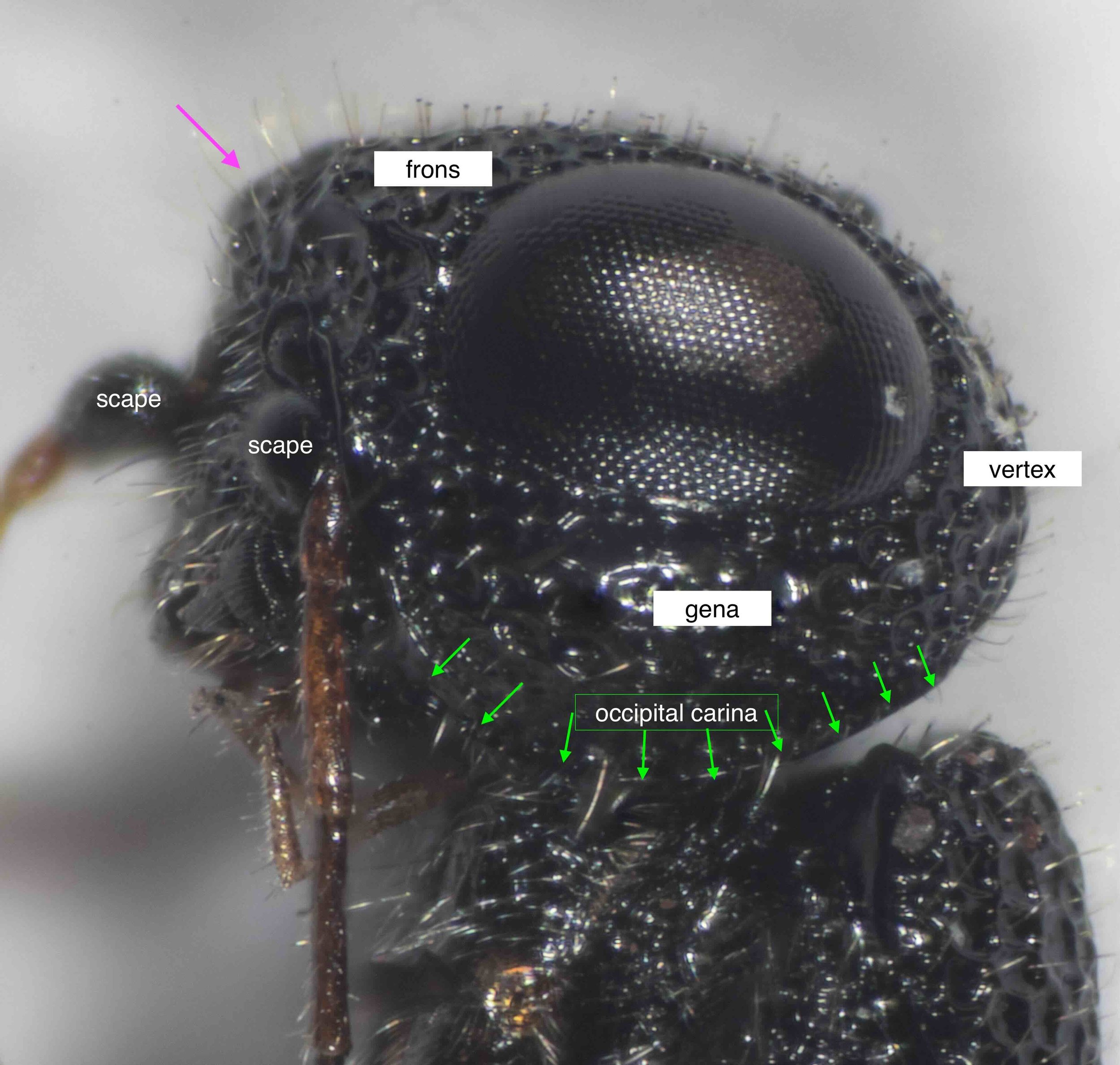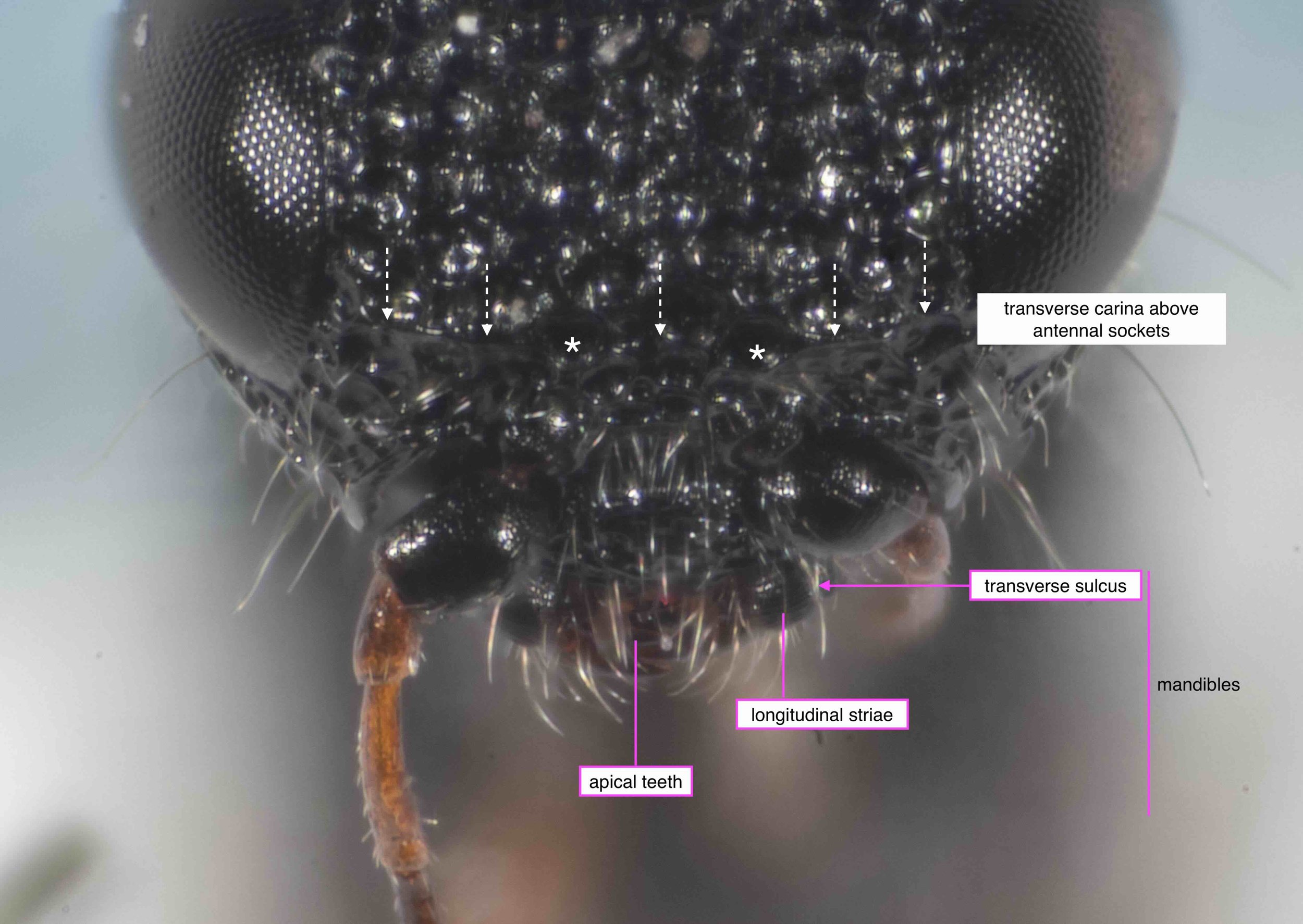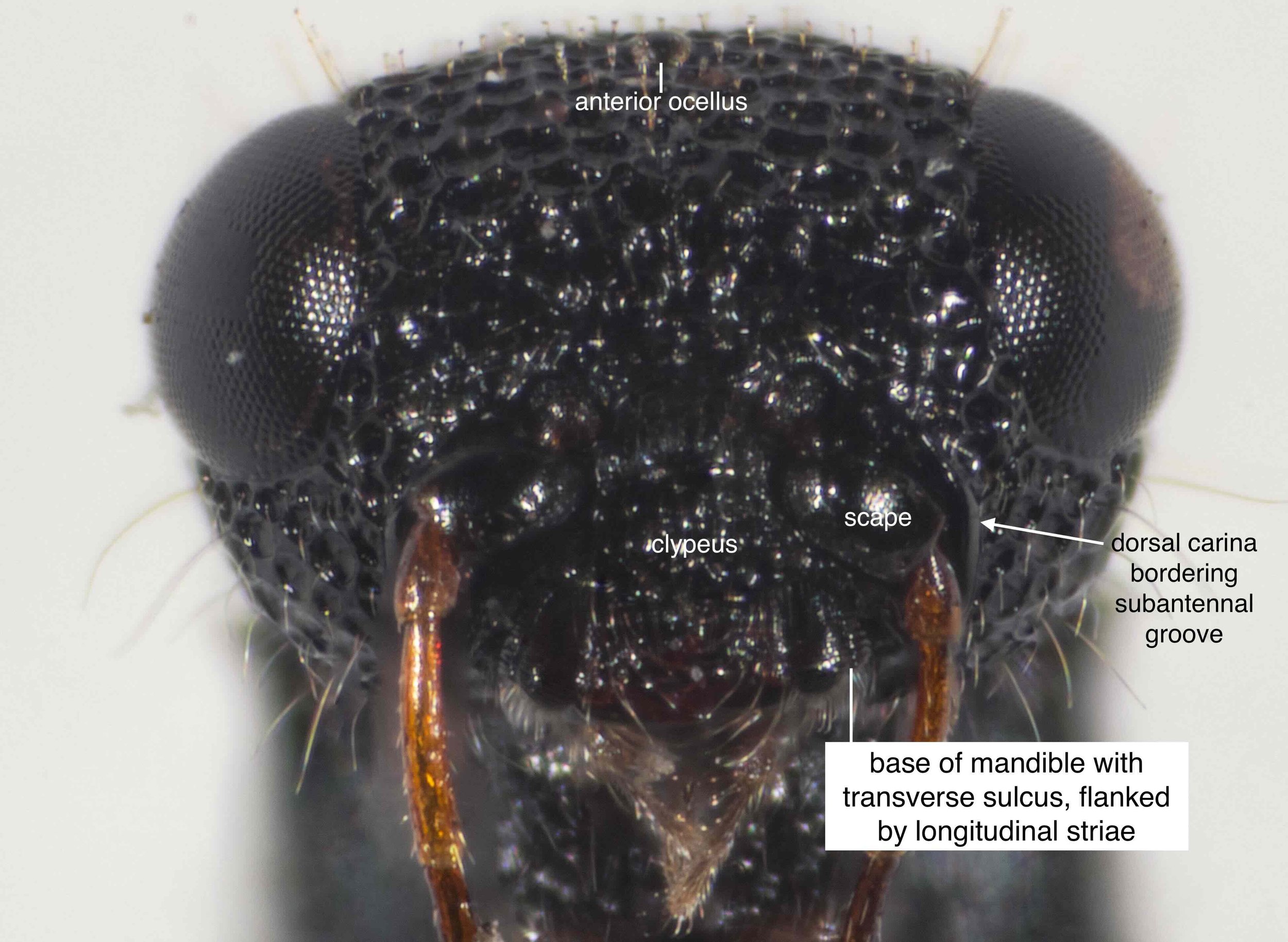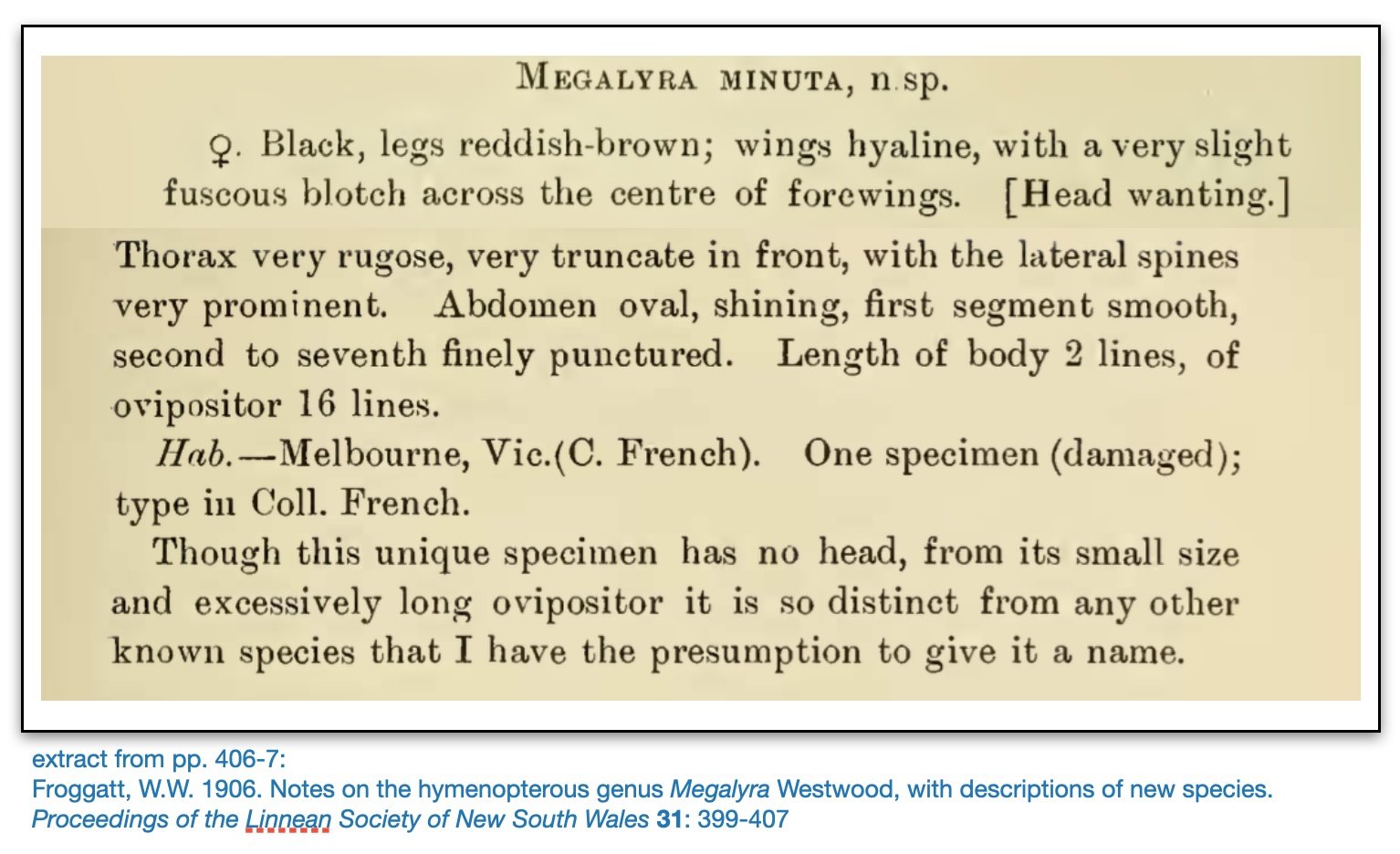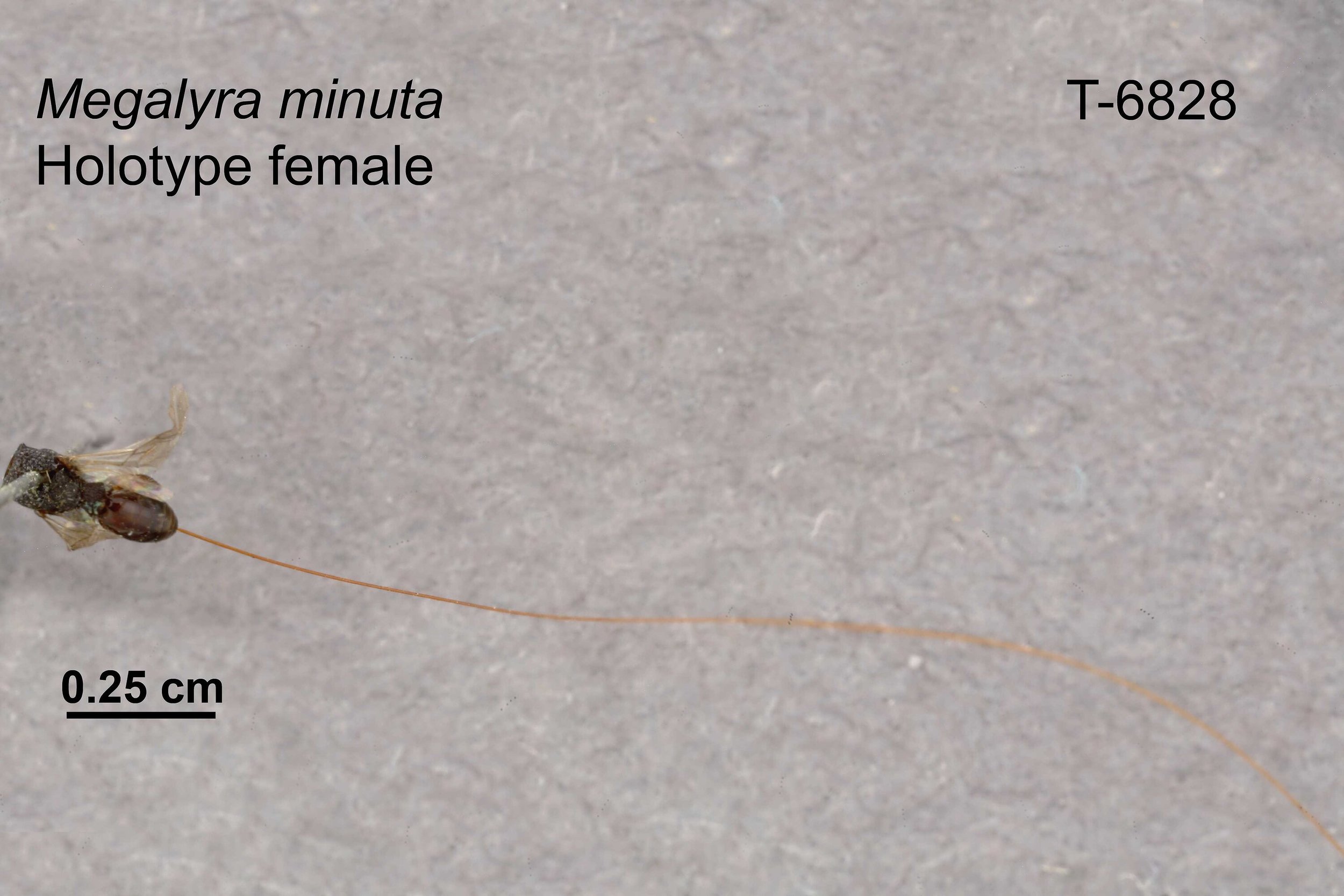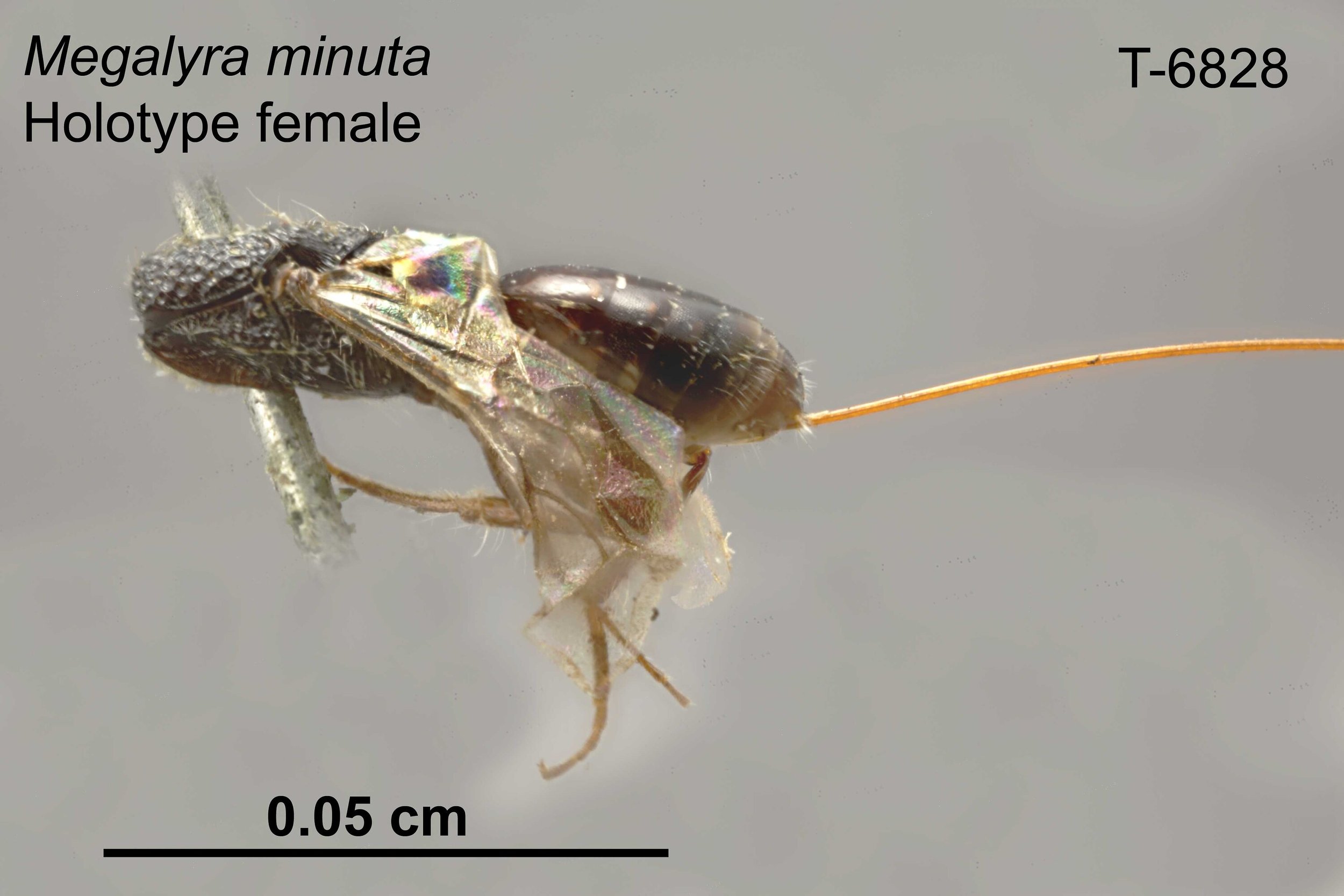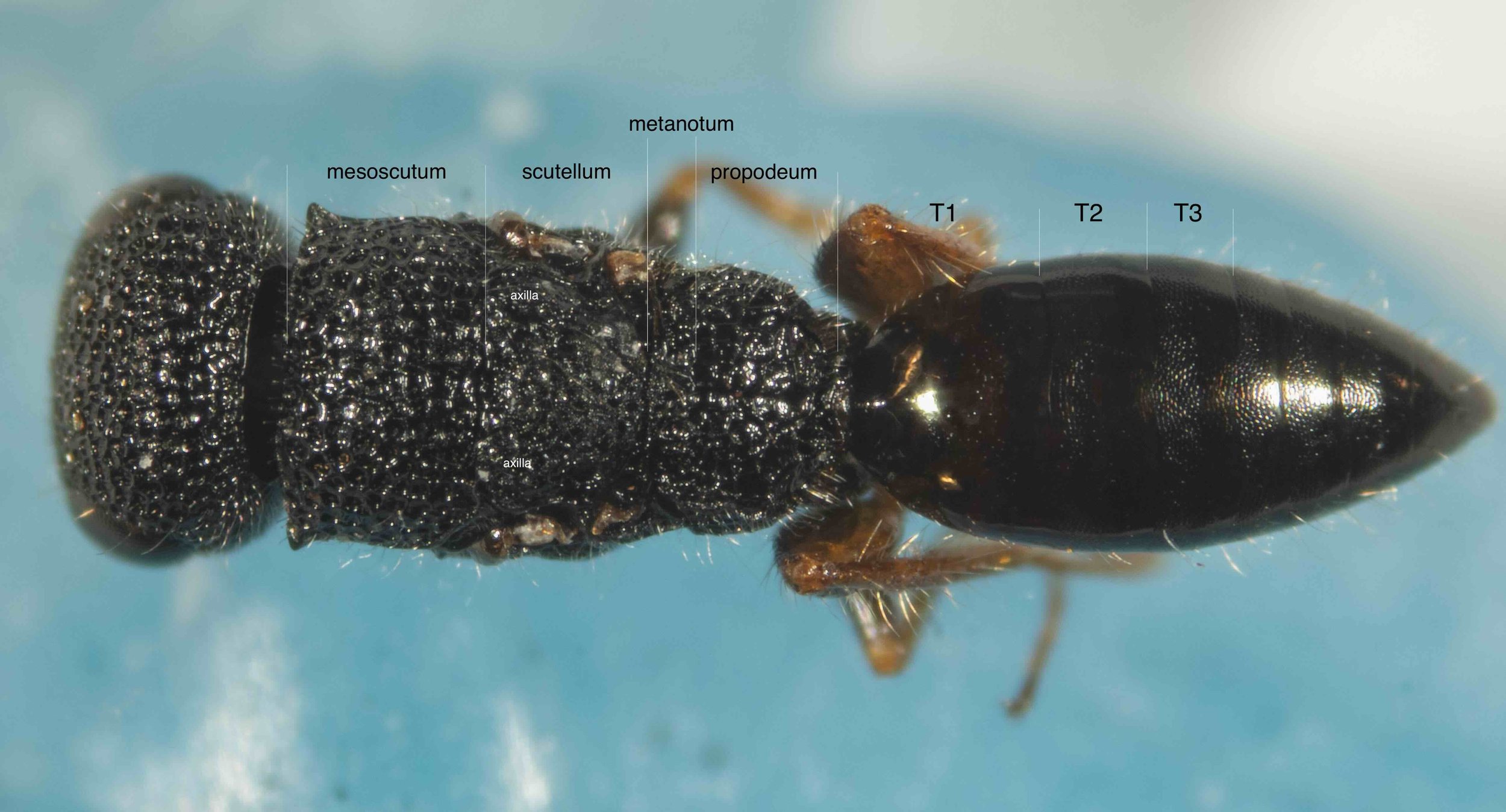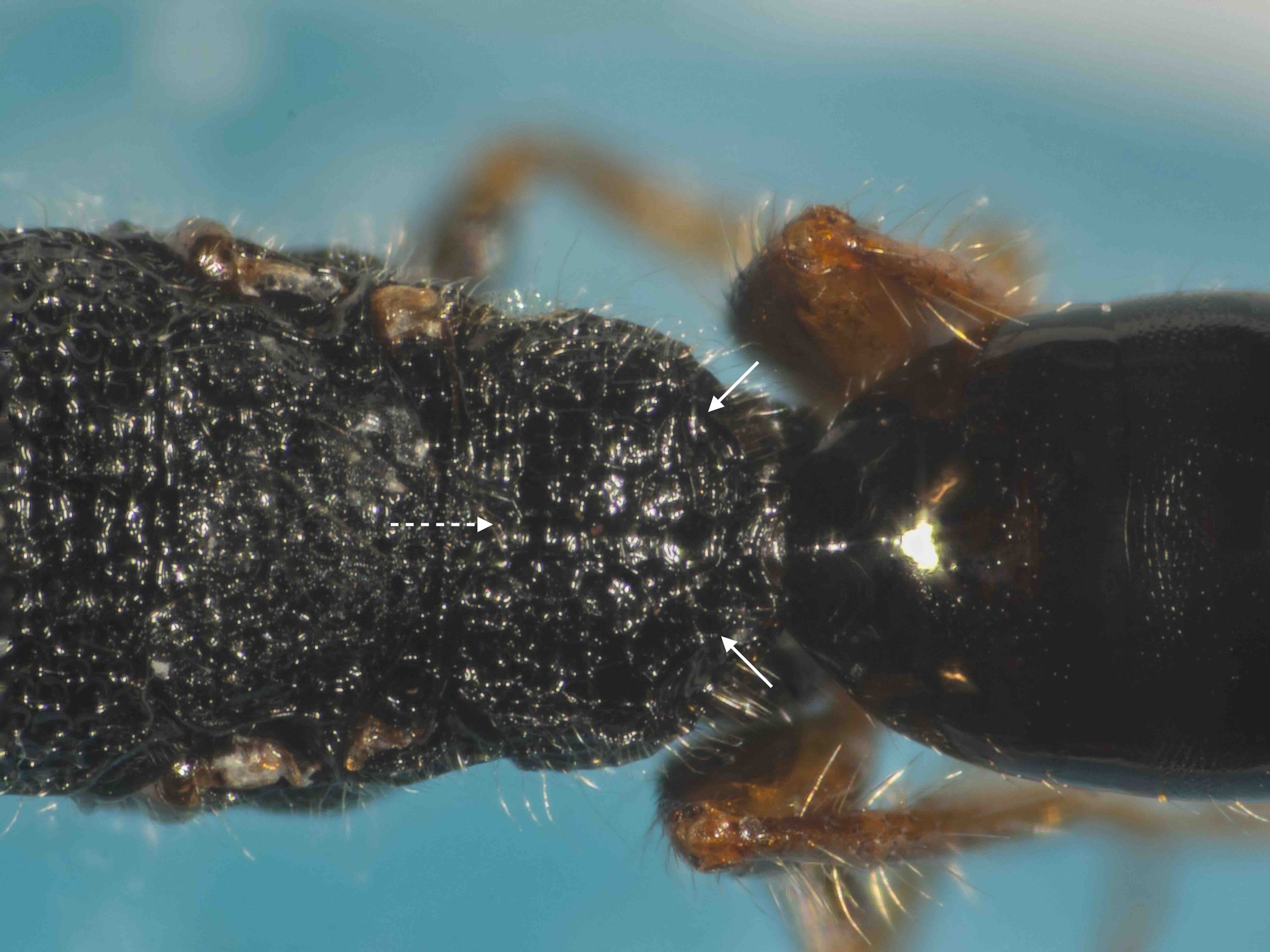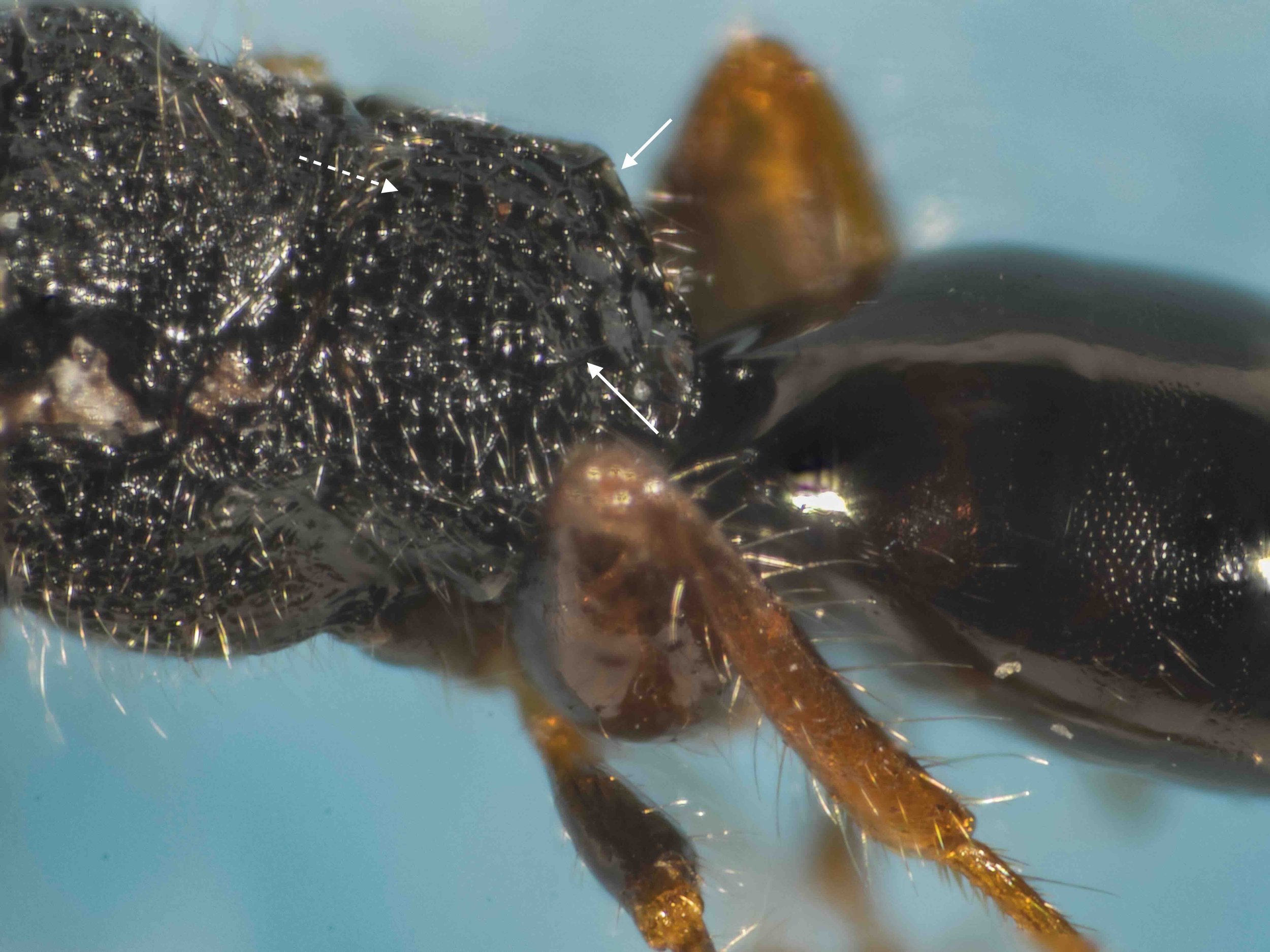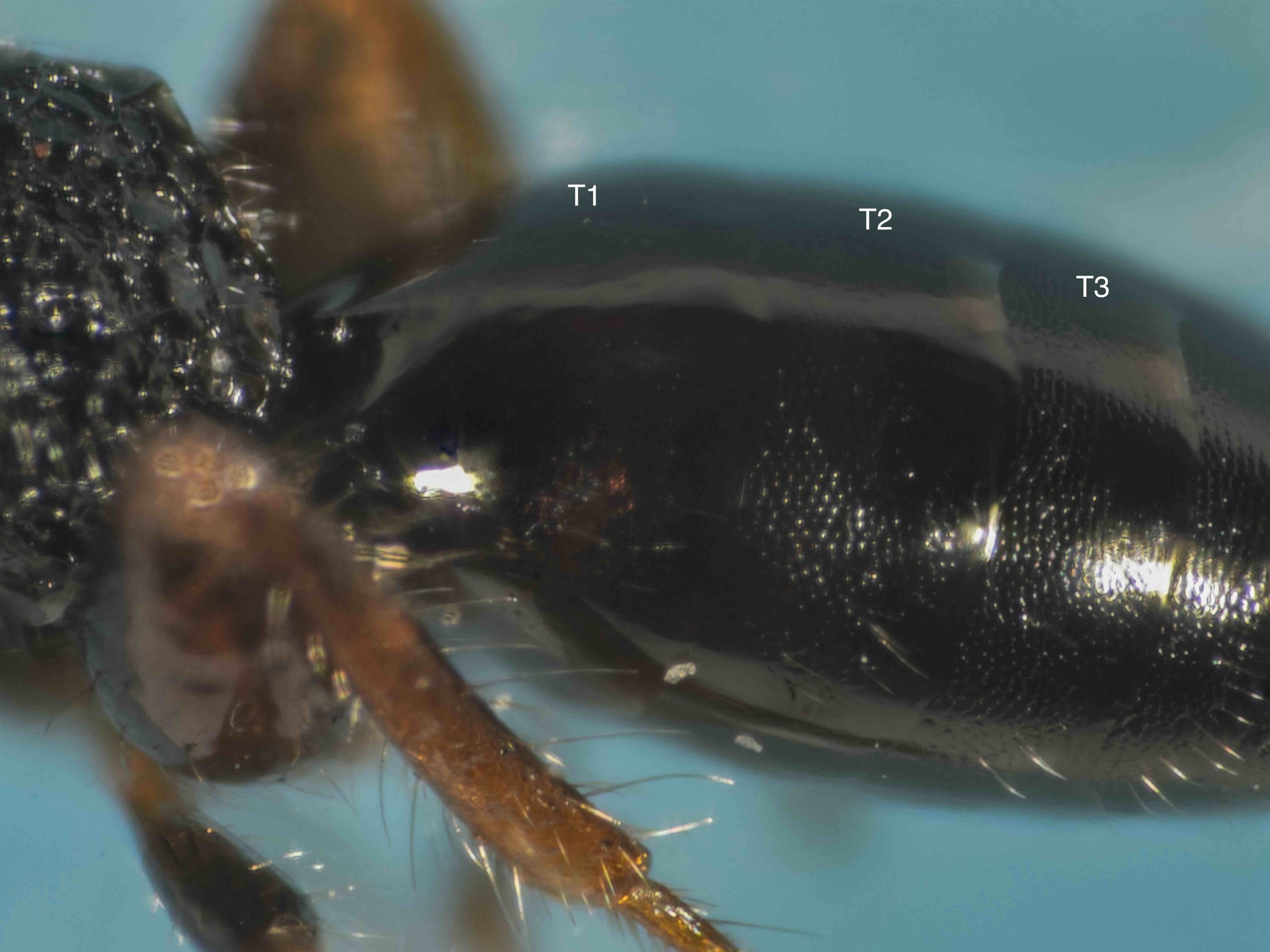Megalyra minuta species-group (MEGALYRIDAE)
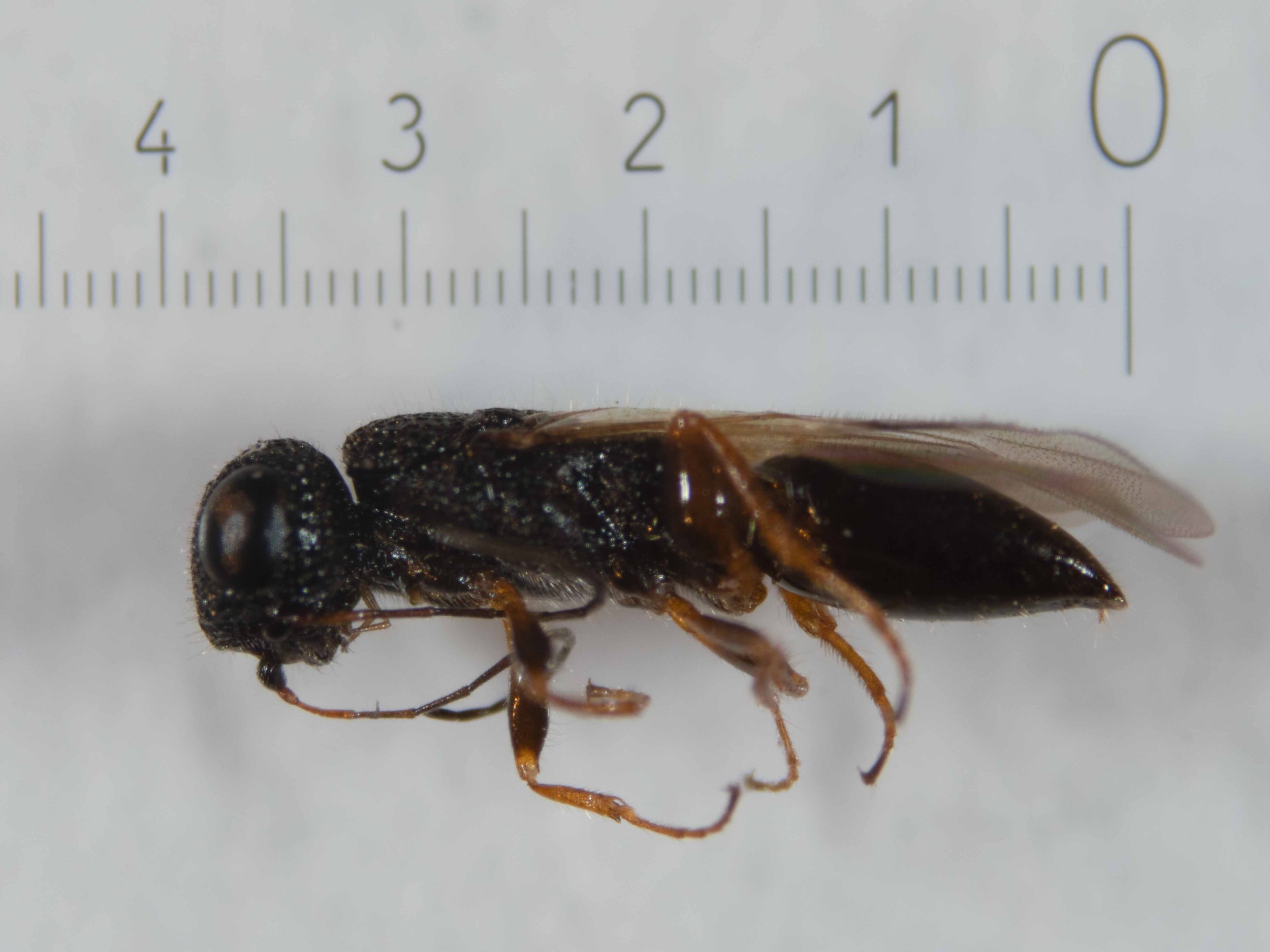
Workbook
Found mid June 2024 dead on window sill inside house, almost certainly having emerged from sticks/logs brought inside for firewood. Collected and stored dry, specimen ID 2406C.
[now added to iNaturalist: https://inaturalist.ala.org.au/observations/240078121]
[Note that I found a second Megalyra just a few weeks later … see #2408B. And I’m convinced that it is a different species!]
Genus = Megalyra
This is the first Megalyra wasp I have found, so my introduction to the family was based on this individual. Specimen 2406C ticks all the boxes for Megalyridae, including the 14 antennal segments, subantennal grooves, reduced wing venation, and mesosomal structure. For details, see the Megalyrid Hub page. Megalyra is the only representative of that family in Australia. The lack of a distinct forewing pterostigma, coarse sculpturing of the head and mesosoma, open radial cells of forewing, and absence of a postorbital carina are also indicative of this genus.
2. Species group = minuta
Can I find a match among the 22 described species of Megalyra in Australia? Shaw (1990) revised the genus, described additional species, and provided a key. No new Australian species have been added since then.
Note that Shaw (1990) grouped the Australian species into six informal subdivisions, or ‘species-groups’. See the following table for a summary of select features and the annotated gallery below for comparison.
minuta species-group
Body size: fits both minuta and wagneri species-groups. Excludes most species, including the rufipes, fascipennis & shuckardi species-groups.
Absence of forewing costa: diagnostic of minuta species-group. Excludes wagneri species-group (as well as and all other groups).
Flagellum apex broader than base: diagnostic of minuta species-group. Excludes all other species groups.
The above three features alone clearly place 2406C in the minuta species-group. The following features are also consistent with the minuta species-group:
forewings without dark medial band (excludes fascipennis, rufipes, shuckardi & longiseta species groups)
hindwing with 3 hamuli, not more (excludes fascipennis & shuckhardi species-groups)
Rs of hindwing reduced (excludes the two common, widespread species M. wagneri and M. fascipennis)
F1 as long as F2 (excludes fascipennis, rufipes & longiseta species groups)
mesoscutum much wider than long
genae short
2406C is a male
With no ovipositor, I suspected a male, but just in case the ovipositor had been broken off I sought other features for confirmation. Although I’ve yet to find a published explanation of sex differences in this family (beyond the obvious ovipositor), I surmise the following:
the metasoma of females tends to have a more rounded apex;
the base of the mandibles is distinct in males, at least in Megalyra troglodytes (Naumann, 1987).
3. Species = Megalyra minuta (?)
Identification to species within the minuta species-group is somewhat fraught, to say the least. Species have often been differentiated on the basis of the ovipositor (length and texture of the sheath) … so one needs a female. Many species are known from only a very small number of individual (and often just one), so there is no indication of the range of variability within a species. And males are completely unknown for most species in the minuta species-group (8/11)!
Despite the above caveates, I think I can safely exclude the following:
M. troglodytes. Both sexes have a bright orange metasoma. The metasoma of 2406C is black.
M. aquilona. The lone female, from the Northern Territory, also has an orange metasoma (albeit infused with black).
M. brevicauda. The holotype female is minute (at just 2.6mm long), with an extensively orange colouration … including the metasoma. This is one of the few species for which online images are available https://collections.museumsvictoria.com.au/specimens/1018939 . Body colour is quite consistent across the sexes for species where both are known, so one would expect a male M. brevicauda to be similarly light in colour … not extensively black, like 2406C.
M. rieki. This is another minute species (holotype female 2.5mm long), and very similar to M. brevicauda. The metasoma is similarly colourful … infused reddish to yellow-brown laterally and ventrally.
M. nanella. The diagnostic feature of this species is the additional pair of teeth on the anterior margin of the mesoscutum. Although this is based on only a single female, it seems likely that males would be similar. The overall shape of the mesosoma is consistent across the sexes for species where both are known.
M. lilliputiana. Given the known distribution of this species includes the NSW south coast and Victoria, I initially thought this a candidate. However, it can be excluded on the basis of two features: the hind femora are entirely black, and the forewing has a distinct, dark infumate medial blotch.
M. pygmaea. Lacks transverse frontal carina, whereas the carina is present in 2406C.
M. testaceipes. The strong frontal carina is diagnostic for this species … and Shaw (1990) emphasises that it it strongly developed (see Fig. 28, p. 1031), and contrasts this with the ‘faintly developed’ frontal carina in M. troglodytes (see Naumann, 1987. Figs 1&3). The carina of 2406C is no stronger than that of M. troglodytes, so I exclude M. testaceipes. In addition, the legs of M. testaceipes, including the femora, are yellow. Not so 2406C.
This leaves just M. gnoma and M. minuta. Either is a possibility, although I think M. minuta is the strongest candidate. M. gnoma is relatively large and has much more slender basal flagellomeres … but given that size can vary greatly between individuals, and M. gnoma is based on a single female, I can’t confidently exclude the possibility.
So just how good a match is 2406C to the description of M. minuta?
Megalyra minuta
It looks pretty good to me. The mesoscutum of the female is a bit longer and the head wider than in 2406C. Indeed, on both measurements M. gnoma is a closer match to 2406C. Hhhhmmm. A further indication that I mustn’t jump to conclusions on such scant sample data.
One last look
An additional feature used to discriminate Megalyra species is the sculpture of the propodeum … and this I hadn’t previously imaged. So I decided to remove the remaining wings from 2406C. I did this with some hesitation. Whatever species in the minuta species-group 2406C belongs to, males are so rare it is a rather special find and should probably have been lodged in a museum. Oh well, done now. I have the images, I’ve kept the wings safe … and I hope to gather another specimen or two in the future. Now that I know what to look for (plus where and how to search!).
The propodeal sculpture of 2406C does seem to fit the description of M. minuta … but see notes below regarding the challenge of interpretation/recognition of furrows and carinae when the background sculpturing of the propodeum is so coarse.
One final hint that M. minuta might be a good bet. This species has been collected in our region: Victoria and Canberra. In contrast, the sole M. gnoma was found in southern Queensland.
Froggatt, W.W. 1906. Notes on the hymenopterous genus Megalyra Westwood, with descriptions of new species. Proceedings of the Linnean Society of New South Wales 31: 399-407
Naumann, I.D. 1987. A new megalyrid (Hymenoptera: Megalyridae) parasitic on a sphecid wasp in Australia. Journal of the Australian Entomological Society 26: 215-222
Shaw, S.R. 1990. A taxonomic revision of the long-tailed wasps of the genus Megalyra Westwood (Hymenoptera: Megalyridae). Invertebrate Taxonomy 3: 1005-1052
This is a workbook page … a part of our website where we record the observations and references used in making species identifications. The notes will not necessarily be complete. They are a record for our own use, but we are happy to share this information with others.

